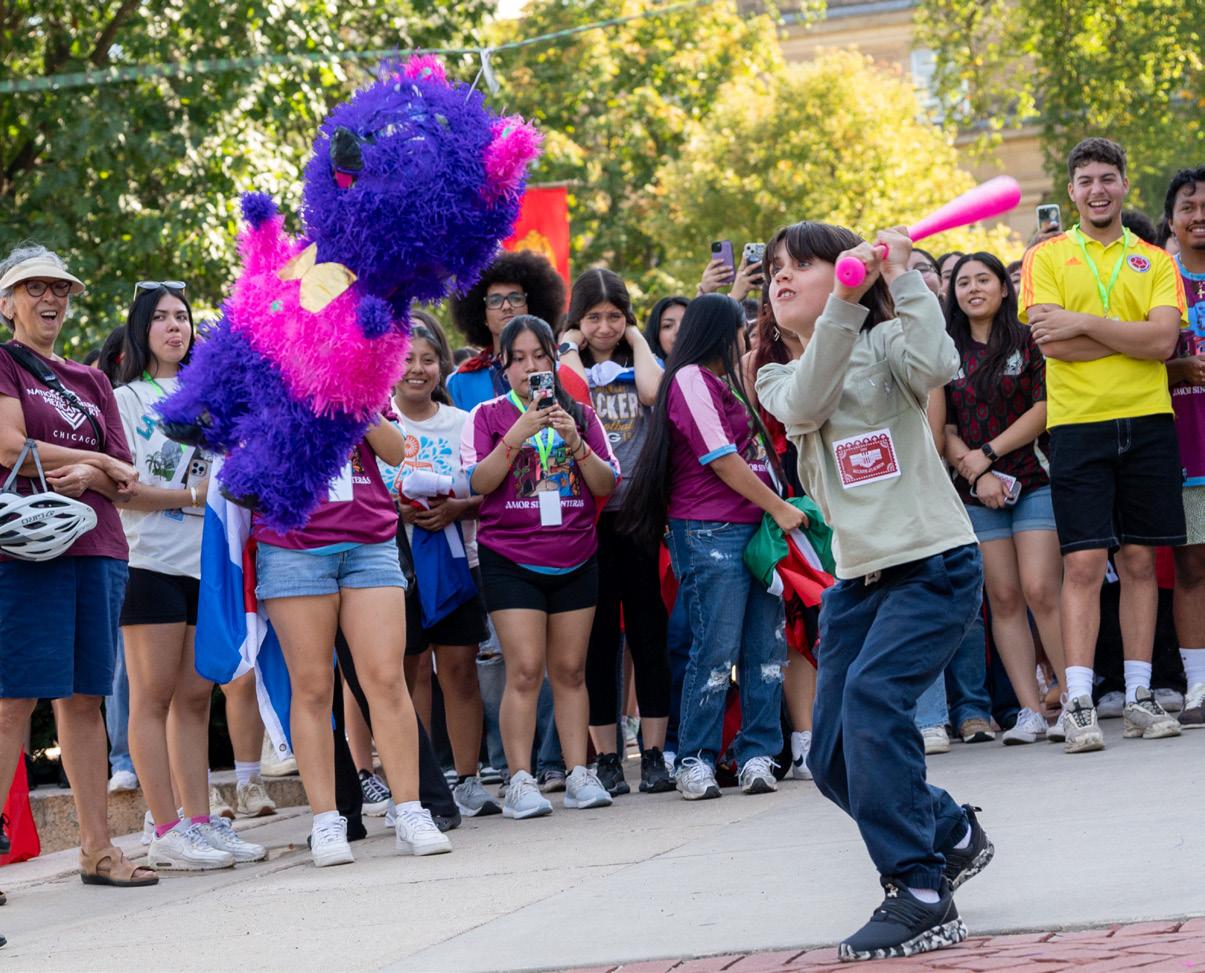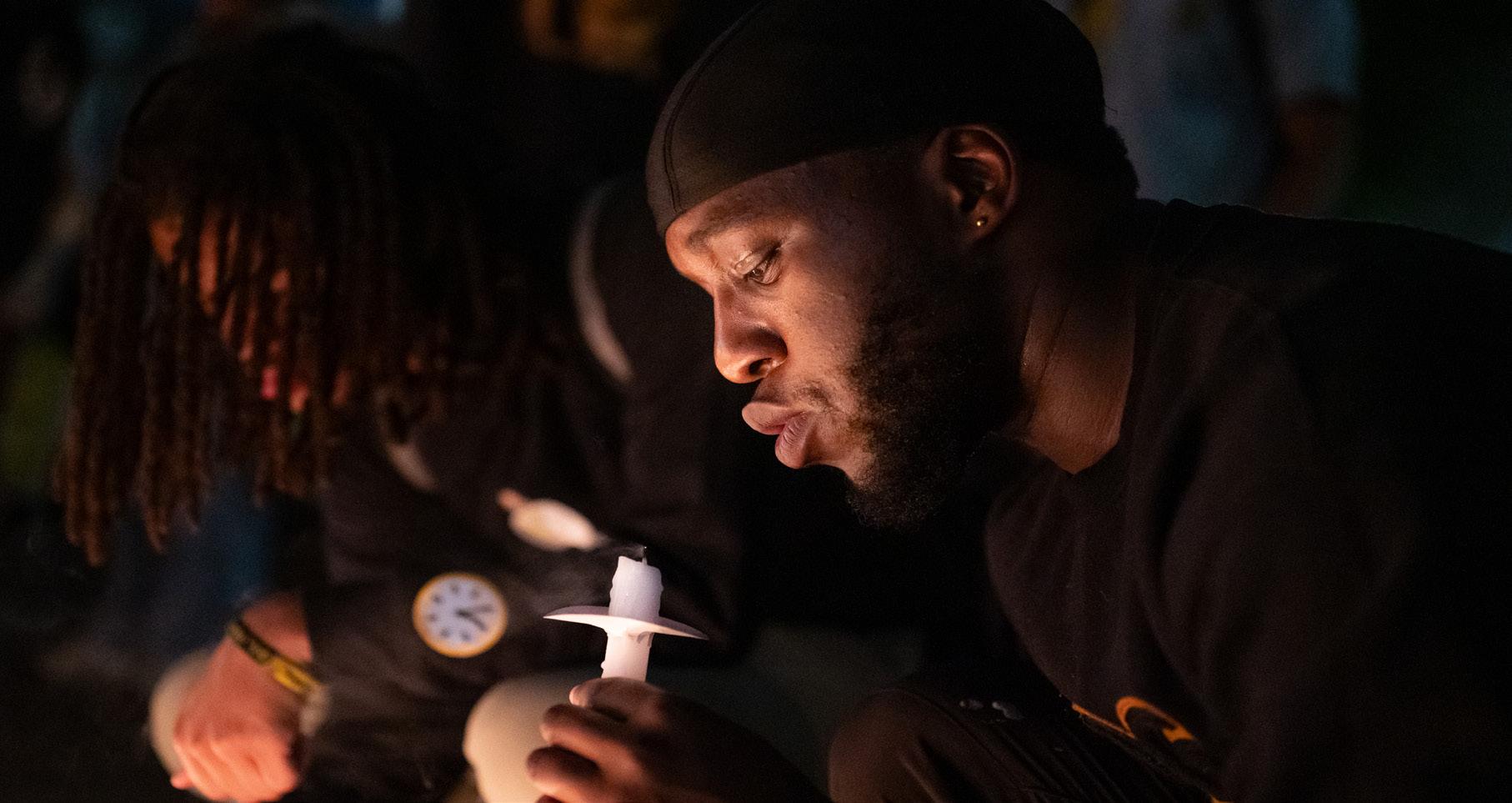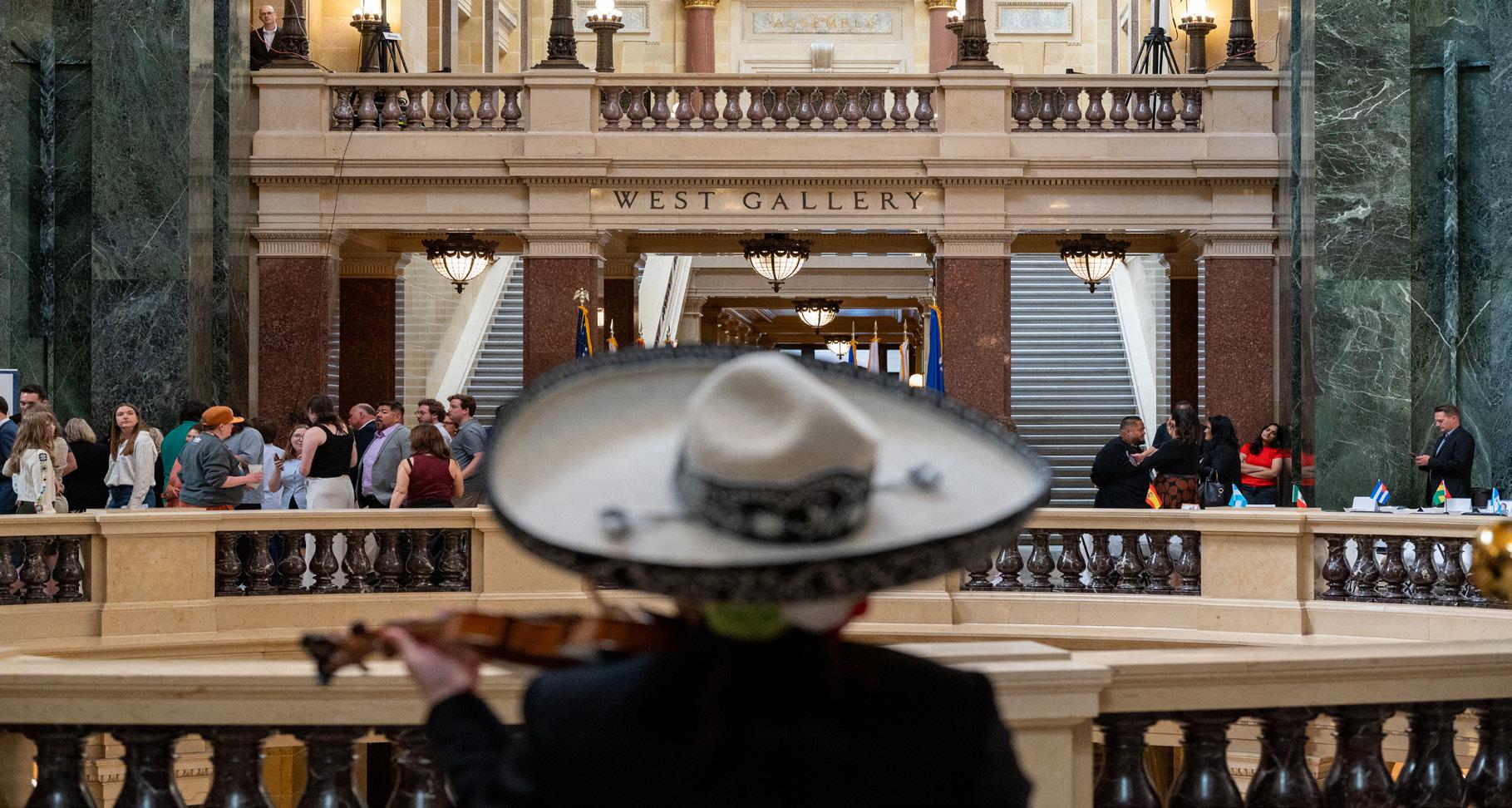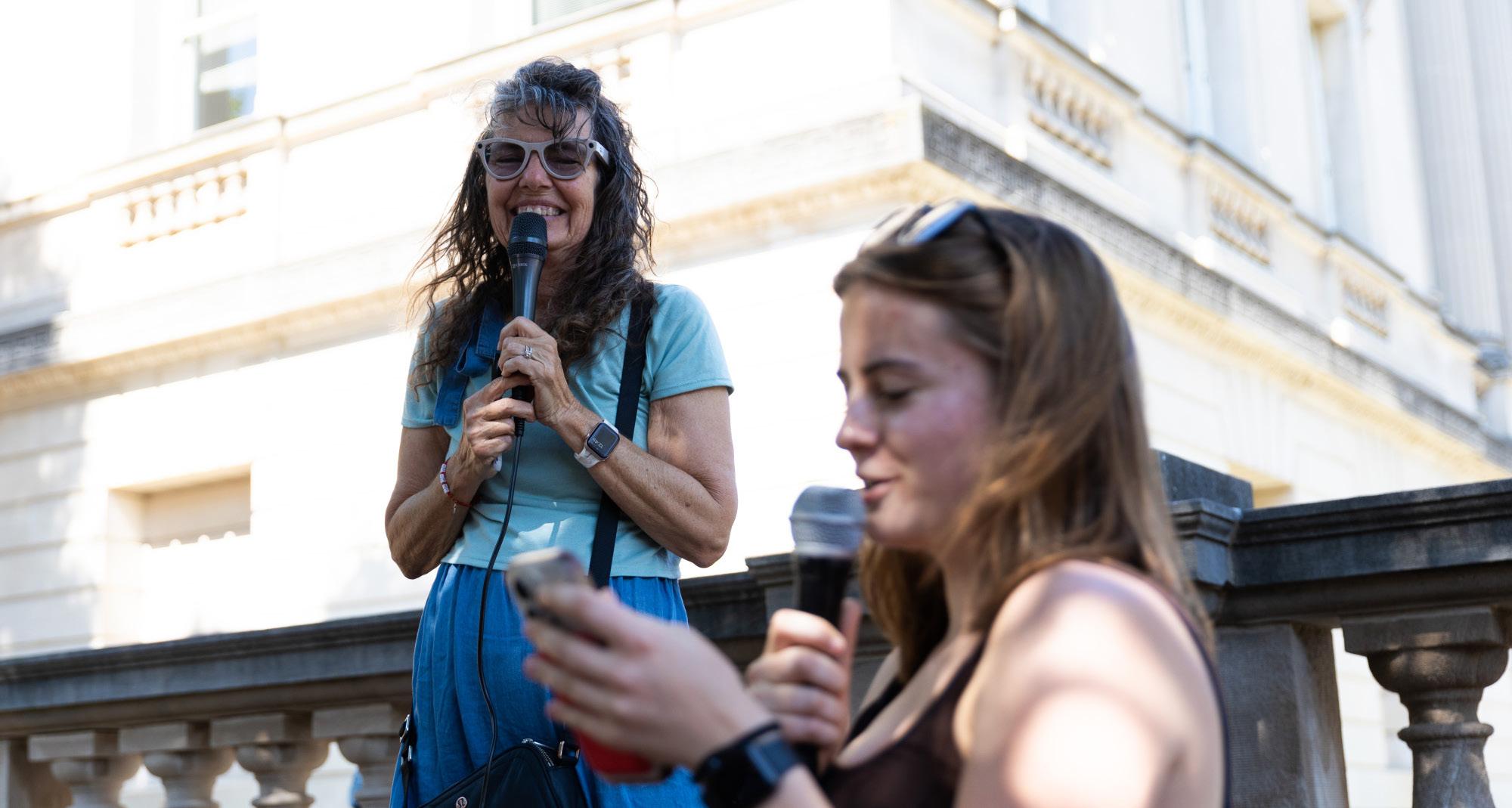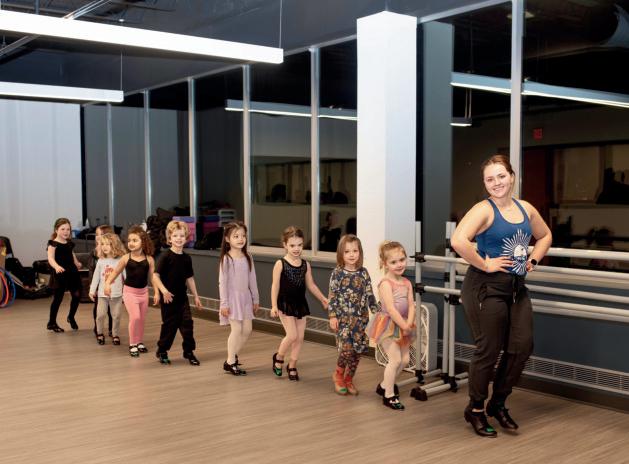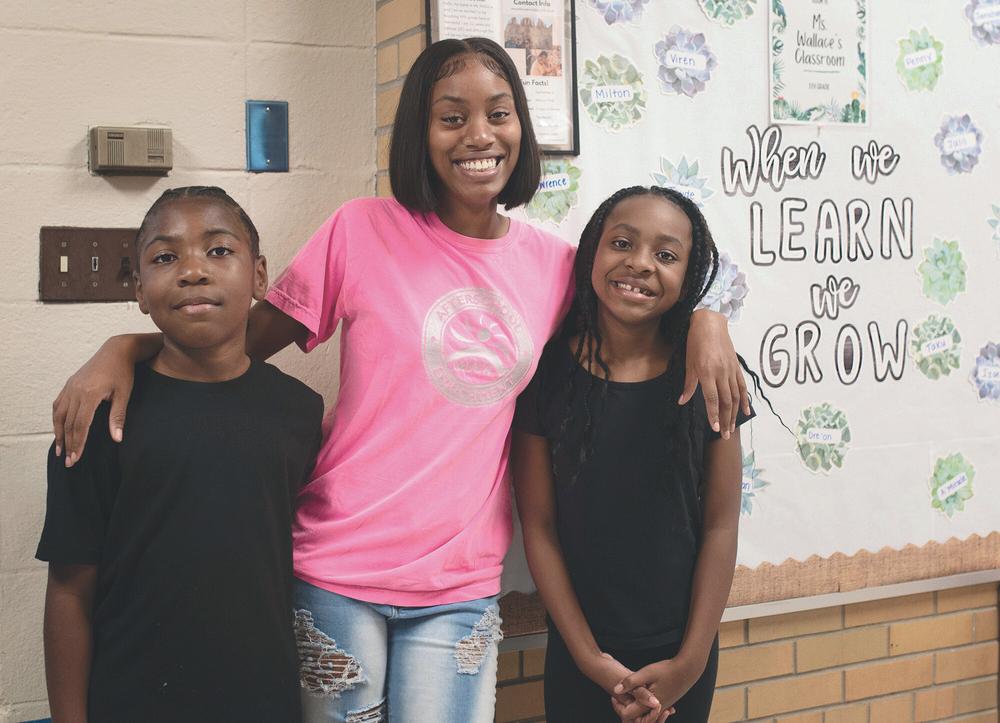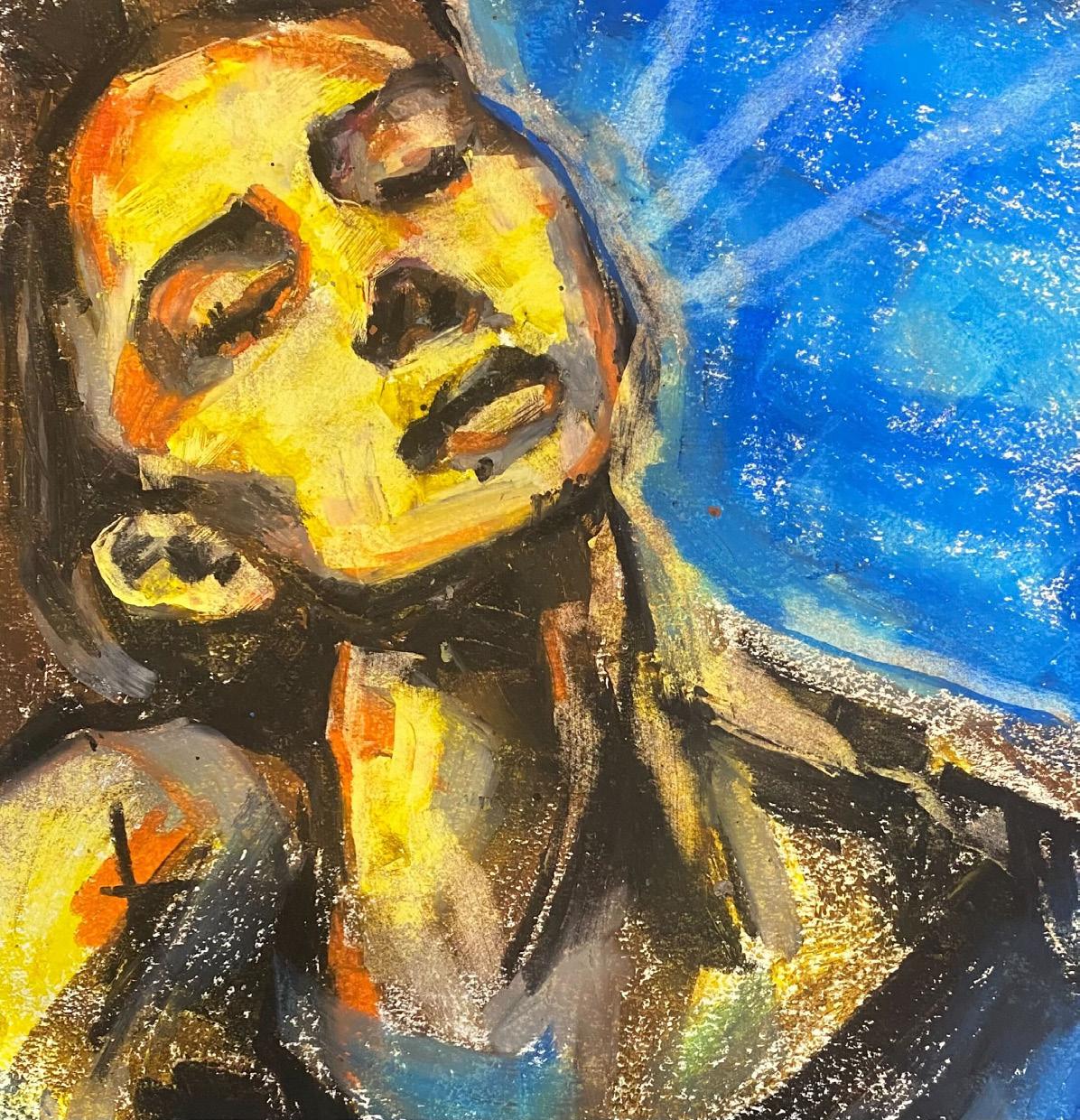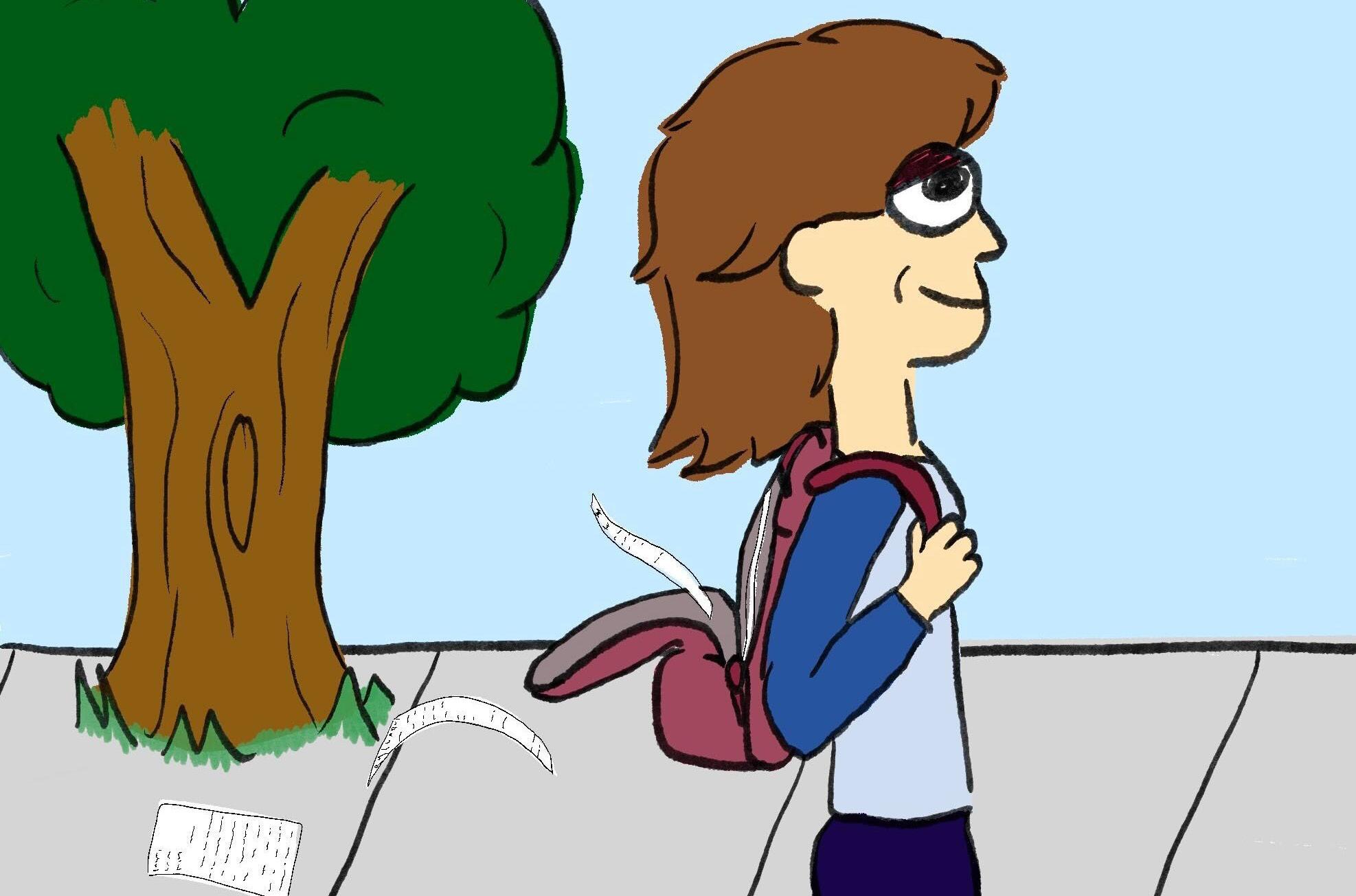






By Annika Bereny & Alaina Walsh
CAMPUS NEWS EDITOR & ASSOCIATE NEWS EDITOR
University of WisconsinMadison Chancellor Jennifer Mnookin highlighted the arrival of a record 8,500 freshman, even as she warned of looming challenges tied to federal and state funding and free speech scrutiny in a student media roundtable Tuesday.
The incoming class was selected from more than 74,000 applicants — a 12% increase over last year — with students representing all 72 Wisconsin counties, all 50 states, Washington D.C. and Puerto Rico. The class includes the highest share of first-generation students in at least 20 years, with more than 25% of them being Pell Grant-eligible.
Vice Chancellor for Student Affairs Lori Reesor also said the Student Affairs office plans to announce a new office at UW-Madison for first generation and limited income students. Currently, they are searching for a director to head the office and plan to open it in January 2026.
“As a first generation student, there are a lot of things you don’t always know, or don’t realize you don’t know,” she said. “To help students find community, find additional support and guidance and direction for how to navigate this really big place [is their goal].”
Graduate and professional enrollment, however, dropped 3% overall, with new graduate enrollment down 9% in total. Mnookin said the decline was “partly” deliberate, as some programs scaled back class sizes due to federal funding uncertainty. International enrollment fell by about 500 students, though Mnookin noted the decrease was less severe than anticipated.
Mnookin stressed that the federal research landscape remains volatile. Higher education associations have forecast a new Office of Management & Budget order cutting reimbursement rates for indirect research costs to 15% could slash UW-Madison’s budget by $100 million annually.
“I do think that if we face significant cuts to research, the bulk of the impact of that will be in the research space. I think we would probably try to look to be as efficient as possible across the university,” she said. “We will do all we can to preserve our research mission, and we will do all we can to preserve the strength of the student experience.”
To prepare for future cuts, campus units implemented 5% to 7% core funding cuts this fiscal year.
“Doing modest cuts now, even if

not welcome, is the financially responsible thing to do,” Mnookin said.
Reesor said leaders leaned on data to minimize student impact.
“We can’t keep doing more with less,” she said. “But we’re making hard decisions based on where students need support.”
Mnookin emphasized student aid remains off-limits for cuts. “Not a single dollar of financial aid disappeared — no scholarships were eliminated,” she said.
Mnookin and Reesor also highlighted contributions that alumni have made in the face of both state and federal cuts.
“We’ve been gratified to see that there’s alums who’ve stepped up and said, ‘Wow, in the face of this, how can I help?’,” Mnookin said. “There have been people who’ve
made a generous scholarship gift, other people are talking about contributing to research.”
Beginning in the spring, the Department of Education launched a string of federal investigations in response to Title VI complaints made stating universities, including UW-Madison, failed to adequately address incidents of harassment based on shared ancestry.
“We’re a public institution,” Mnookin said. “It is our responsibility to follow the law, whether I like the law or I don’t like the law, isn’t really helpful. It is my job and my responsibility to follow the law.”
By Vanessa Gavilan CITY NEWS EDITOR
In the month of September alone, the City has shut down two notable homeless encampments — Dairy Drive and an unsanctioned encampment near Capitol Square — leaving questions about how to protect the rising homeless population in Madison.
Jim O’Keefe, City Of Madison Community Development Director, told The Daily Cardinal the concerns are palpable for the Madison community. “I think anybody that works in this space would recognize that there has been a lot of turmoil in the system that supports people in Madison and Dane County that experience homelessness,” he said.
Madison’s homeless population is almost 800 people, according to a count done by the Homeless Services Consortium of Dane County in January. That’s a 7% increase from 2024 and a near 20% increase since 2020.
The Madison Police Department (MPD) began plans to shut down a homeless encampment by the Wisconsin Veterans Museum located on the Capitol Square at the end of August. The encampment had not been sanctioned by the city, and officials cited a significant increase in the amount of calls for police services in the area since the encampment was established.
“We don’t think living outdoors is a sustainable alternative in this climate, we don’t think it’s safe, we don’t think it’s healthy… [but] some people choose to try to do that rather than take advantage of shelter
facilities,” O’Keefe said.
Shortly after, the Sept. 16 Common Council meeting decided the fate of the Dairy Drive campground. The campground contained 29 mini-housing structures, with all of those structures in use at the time of the vote.
Dairy Drive opened in 2021 as a temporary emergency measure at the height of the COVID-19 pandemic. The campground’s $70,000 per month of funding came from federal COVID-19 relief funds.
After hearing from current residents and city officials, the council deliberated for roughly four hours, ultimately coming one vote short of extending the encampments funding until April and closing the encampment effective Sept. 30, the same day the relief funds expired.
This decision has been met with backlash from community members.
According to a statement from District 8 Alder MGR Govindarajan, several alders were confronted by protesters urging them to reconsider the vote on Dairy Drive after a Sept. 30 Common Council Meeting.
In a video posted to Facebook by the protester group Dane County Homeless Justice Initiative, Govindarajan said he would try to have the Dairy Drive matter reconsidered. However, Govindarajan said that statement was “made under coercion, not a change of position.”
“No elected official should be put in a position where they feel unable to leave a public building without making promises under pressure,” he said. “I will not be reconsidering my vote on Dairy Drive.”
New services and funding spark immediate change
Such drastic changes prompted an immediate response from city officials and organizations.
MPD announced they would be adding two new neighborhood resource officers to their force to help address police interactions with people who are homeless.
These officers will focus their efforts in Northeast and Downtown Madison, hoping to create connections with the homeless population and improve communications between police and homeless services.
Madison Mayor Satya RhodesConway announced $1 million in new spending to fund homeless services as part of the 2026 Executive Operating Budget on Sept. 22.
“We need to provide services to vulnerable residents while creating more housing in our community so all our residents can thrive,” Rhodes-Conway said during a press conference.
The funding will need to be approved by the Common Council before it can be distributed.
New shelter construction makes for a cautiously optimistic future
Two new shelters being built offer hope for better and more comprehensive support, but limitations persist.
“I think anybody that supports and serves this population would be looking forward to new and better
physical spaces,” O’Keefe said.
In April 2025, expansion plans resumed for a women’s shelter associated with the Dane County Salvation Army after a nearly sixyear delay.
The delay in progress occurred because of the COVID-19 pandemic, and since then, the project has seen a $16 million price increase.
The shelter would more than double their current capacity for families and would add almost 40 beds for single women.
The Bartillon men’s shelter is set to complete construction in early 2026 and has a maximum capacity of 250 people once it begins operating.
The 42,000 square-foot shelter, which includes sleeping, cooking, hygiene and outdoor spaces, had a budget of $27 million at the beginning of construction.
The shelter will be open 24/7 and will provide mental and behavioral health services during the day, according to O’Keefe.
However, these new offerings come at a higher cost than the city can currently afford.
The shelter has an estimated $4 million annual operating budget to provide these round-the-clock services, according to O’Keefe. “We don’t have $4 million at this point to meet that budget,” O’Keefe said.
O’Keefe pointed to other groups whose support is needed to close gaps in funding.
“We’re going to need Dane County to make a similar commitment, and we’re going to need the private sector to play a role in contributing to this facility if it’s going to work,” he said.
By Ella Hanley COLLEGE NEWS EDITOR
The Madison Police Department (MPD) will no longer conduct bar raids downtown after implementing a procedural change ahead of the fall semester. The announcement marks a major change in how the department approaches nightlife safety, one that officials hope will ease tensions between police, students and bar owners, an MPD officer told The Daily Cardinal.
“Shutting down bars, having cops close down the entrances and ID-ing every single person in the building — that will no longer happen,” District 8 Alder MGR Govindarajan told the Cardinal Tuesday.
Govindarajan, who represents much of campus-area, confirmed the changes after recent conversations with MPD Chief John Patterson.
“Bar checks” — unscheduled police entries into bars to check liquor license violations, overcrowding and underage drinking — have been a staple of the Madison nightlife scene. But in recent years, large-scale “raids” have increased to the point where they happened “every two weeks,” according to Govindarajan.
MPD raided The Nitty Gritty last January, issuing over 200 citations for underage drinking. Students,
who asked not to be named, told the Cardinal police remained on scene for hours.
“I brought up the concern to the chief like, ‘This isn’t really productive. Why are we targeting people?” Govindarajan said. “It seems like the police could be focusing on more relevant issues downtown rather than just giving citations to underage kids drinking safely at bars.”
Govindarajan, who also incentivized MPD’s newly implemented underage drinking amnesty policy, said there have been no raids during the fall semester.
MPD will rely more on discretionary enforcement at bars — if a bar is reported with many underage patrons, MPD will still respond. Officers will remain on high alert for underage drinking and may still take samples of IDs during bar checks. But full bar barricades and mass ID checks, like that at The Nitty Gritty, should not happen again.
“The chief was very willing to work with me on this issue,” Govindarajan said. “He did not discredit any of the issues, but he wanted to do his due diligence, so it took a bit of conversation and information gathering, but that’s what led to the bar raids ending.”
Captain Kipp Hartman of the
Central District, which includes most of Madison’s isthmus, said the decision followed discussions with city officials and business leaders. Instead of untargeted raids, MPD will focus on proactive collaboration with downtown businesses and identifying establishments who “skirt the law” regarding fake IDs before problems escalate.
“We always want to be good partners with businesses in the downtown area, and I do believe that the vast majority are doing the right thing,” Hartman told the Cardinal. “We want to keep those relationships going.”
Hartman noted that during bar checks, officers will continue to look for liquor law compliance, crowding issues and underage patrons. Bars found in violation of capacity rules or knowingly allowing underage drinkers inside will still draw enforcement.
Fake IDs remain a central concern. Madison police and bar owners have partnered to crack down on their use, especially downtown. Officers say technology like ID scanners are increasingly necessary for establishments, because fake IDs have become harder to spot.
The citation fine for possessing a fake ID starts at $439, and fines for underage patrons attempting to pur-
chase alcohol begin at $376.
Hartman said officers generally aren’t looking to “stack citations” on students.
“Our goal is usually just to provide one, but sometimes people talk themselves into needing more accountability,” he said. Most students caught are only carrying a fake ID, which officers can confirm through public and University of Wisconsin System records.
Hartman noted that officers will continue both bar checks and “line checks,” where they monitor patrons waiting outside to enter, saying officers are skilled at reading body language and other indicators that might indicate someone in line is underage. However, he emphasized that MPD’s approach is shifting from long detentions during raids to shorter, targeted enforcement.
Hartman said if an entire line of underage people with fake IDs is found trying to enter a single bar, it signals the establishment may not be doing enough to screen at the door.
“We’re trying to find what is a good, reasonable amount of time to get the information we need to demonstrate that a bar is allowing underage drinkers. We’ve worked with the city attorney’s office to

By Clara Strecker STATE NEWS EDITOR
University of Wisconsin-Madison students will no longer have access to local abortion services, as Madison’s East Planned Parenthood clinic will pause performing abortions in October, forcing students seeking care to travel to the closest clinic located in Rockford, Ill. or independent practices in Milwaukee.
Planned Parenthood of Wisconsin (PPWI) will temporarily pause abortion services at all their clinics beginning Oct. 1 due to Medicaid cuts from President Donald Trump’s ‘Big Beautiful Bill’ which barred providers from billing Medicaid as insurance for reproductive health care.
According to abortionfinder, a national website helping people locate abortion providers, the closest clinic to campus providing abortion services is 58.6 miles away in Rockford, Ill. Two independent clinics 75 miles away — Care for All and Affiliated Medical services — both operating in Milwaukee will continue to provide abortions, as one does not receive Medicaid dollars,
and the other said they are unaffected by the Medicaid changes.
University Health Services’ (UHS) provides gynecology services to students including contraception, pregnancy option counseling and referrals and abortion follow-ups, linking PPWI and abortionfinder on their website.
Andrew O’Donnell, UHS Director of Medical Services, said they are aware PPWI will pause abortion appointments in October, but clarified UHS will “continue to provide counseling and referrals for other available options.”
“Planned Parenthood of Wisconsin is — and always will be — focused on putting our patients first. Our commitment is unwavering: Planned Parenthood of Wisconsin will continue to provide the full spectrum of reproductive health care — including abortion — as soon as we are able to,” PPWI president and CEO Tanya Atkinson said in a statement. “In the meantime, we are pursuing every available option — through the courts, through operations, and civic engagement.”
In July, Planned Parenthood sued
the Trump Administration, leading a judge to temporarily block enforcement of medicaid cuts under the bill, granting an injunction allowing abortion services to continue through the end of the summer and early fall. The injunction was lifted this month.
The Hyde Amendment has prohibited the use of federal funds for abortions services since 1976 and currently affects 34 states, including Wisconsin, as the other 16 states provide their own funding for abortion services for people enrolled in Medicaid.
The ‘Big Beautiful Bill’ specifically classifies a nonprofit group providing abortions receiving more than $800,000 from Medicaid in the fiscal year 2023 a “prohibited entity,” and no longer allows them to receive Medicaid reimbursement for any type of reproductive health service.
Planned Parenthood clinics in Wisconsin will keep their doors open for services other than abortions such as contraceptives, cervical cancer screenings, pregnancy and sexually transmitted infection tests and vasectomies.
determine exactly what they need from us, and we’ve reduced the time we hold people while we ID them,” he said.
If a bar consistently draws large groups of underage patrons, MPD may recommend fines and pursue a point system through the City Attorney’s office. Bars that accumulate too many points risk losing their liquor license through the Alcohol Licensing and Review Committee.
“If we can issue warnings to firsttime offenders, we will. It’s when we start to see repeated problems at certain establishments that we move to stronger enforcement actions,” Hartman said.
MPD also offers training sessions for bar staff on how to spot fake IDs, manage capacity and prevent underage drinking. Hartman said many establishments attend these voluntarily, and additional training is offered if a bar is cited for violations. The goal, he explained, is to educate and give businesses the tools to stay in compliance before stricter enforcement becomes necessary.
“A lot of times, officers aren’t looking to get the students in trouble as much as they’re looking to hold that establishment accountable for what’s happening,” Hartman said.
Continued from page 2
The chancellor added that due federal activity around free speech and civil rights enforcement, UW-Madison faces “potential challenges” in shaping campus policies.
Back in April, Mnookin signed an open letter alongside 200 other leaders in higher education calling the federal government’s intrusion “unprecedented” and “coercive.”
The letter followed the Trump Administration’s decision to freeze federal funds to Harvard University after the university refused to comply with their demands.
Mnookin has advocated for civil dialogue and open discussion across ideological lines in the past.
“ Creating opportunities for respectful dialogue across our differences of background and beliefs, and building a shared appreciation for our pluralistic society, are our imperative,” Mnookin wrote in a July message to the UW-Madison community.
At the roundtable, Mnookin said her Deliberation Dinners, wherein students meet to discuss controversial political issues in a setting that exposes them to multiple competing ideas, will expand this fall, alongside additional initiatives in that area that will be announced later in the semester.
Despite warnings of “bumps and bruises” ahead, Mnookin says she remains optimistic about UW-Madison’s ability to weather the storm.
“I really I want to be both candid about the federal risks,” she said, “but I also want to be equally clear that I believe that this institution will get through this moment and that our student experience will remain strong, that we will remain a strong research institution, that our faculty will continue to be able to do important work as teachers and as researchers and as scholars.”
By Alexa Cattouse STAFF WRITER
The University of WisconsinMadison hosted a 85th birthday party for Bucky Badger hosted at the Memorial Union Terrace on Saturday. The celebration began with Bucky at the Overture Center for a kids pep rally before parading with the marching band, cheer squad and dance team from State Street to the Terrace.
Parade members, including many families, wore Bucky merchandise and took photos with Bucky throughout the celebration. Babcock Dairy also debuted a new limited edition ice cream flavor — Bucky’s Birthday Brownie Bash.
Many party-goers heard
about the bash through an Instagram post from the official Bucky the Badger account.
“We’re very excited to be here to celebrate Bucky and everything he does. So we have the cheerleaders, the dancers and the band here to bring joy to everyone,” UW Spirit Squad Director Josette Housen said.
Other staff told The Daily Cardinal they were happy to be part of the celebration, as this is the first time in UW-Madison history Bucky’s had such an extravagant birthday.
Before Bucky, the university used a live badger as a mascot, but had to retire him to Henry Vilas Zoo because maintaining a badger proved difficult.
In 1940, the original design of Bucky was created by professional illustrator, Art Evans.
Some families love Bucky so much they are members of the Bucky Buddies Kid’s Club — an organization giving families exclusive access to Bucky merchandise, birthday messages from Bucky and game day tickets.
Scott and Kristin Williams are both UW-Madison alumni and had Bucky in attendance at their wedding.
“He’s just been a big part of the whole college experience. And every time, no matter how many times you see him, you just get really excited that he’s always animated and doing something funny,” Kristen said.
By Audrey Lopez-Stane and Ethan Morse SENIOR STAFF WRITER AND STAFF WRITER
Republican lawmakers introduced a bill on free speech and academic freedom on college campuses, following longstanding concerns from conservative politicians on ideological diversity and free speech on Wisconsin college campuses.
The bill’s author, Rep. Amanda Nedweski, R-Pleasant Prairie, said the bill ensures free speech for everyone on college campuses, sharing concern over students facing “hostility” from peers and faculty, forcing them to “self-censor or fear of academic retaliation.”
Nedweski told The Daily Cardinal, the bill mirrors similar legislation in 19 other states and current Regent policy 4-21, the University of Wisconsin System’s commitment to free expression, allowing for academic institutions to face legal consequences for any free speech violations to free speech on campus.
The bill outlines consequences for public universities and technical colleges for violating free speech laws. They include twoyear tuition freezes, legal damages and a possible requirement that the institution state their free speech violation on admissions documents for four years after the offense, Nedewski told The Daily Cardinal.
UW System Media Relations Director Mark Pitsch told the Cardinal freedom of expression is a critical component for students and said the system will “continue to champion and preserve First Amendment rights across our universities.”
Under the bill, institutions would also be required to provide annual instruction on the First Amendment and conduct a survey on academic freedom and political bias every two years for students and faculty.
“We want to, first of all, make sure that students understand what is and is not protected under the First Amendment,” Nedweski told the Cardinal.
Sen. Rachael Cabral-Guevara, R-Appleton, a co-author of the bill, told the Cardinal civil dialogue on college campuses has faced both direct and indirect threats and needs to be protected.
“Freedom of speech is one of the core principles at the heart of our country,” Cabral-Guevara said. “The goal of this proposal is to clearly codify that very right on our college campuses.”
The press release cited a 2023 UW System survey finding more than half of students admitted to self-censoring, particularly Republican students. It also included a study showing 99.1% of political donations by University of Wisconsin-Madison faculty went to Democratic candidates or causes.
“If you’re a conservative professor,
you’re really an outlier,” Nedweski said.
“It is difficult to get through sometimes to students or colleagues that it’s okay to have differing viewpoints.”
College Democrats of Wisconsin Vice Chair Ty Schanhofer told the Cardinal the bill isn’t as effective as the authors believe.
“Look around the Wisconsin campuses we have,” Schanhofer said. “I don’t think you see a chilling or silencing of speech from liberals at all.”
Schanhofer mentioned multiple prominent conservative faculty at UW-Madison, including former political science professor Ryan Owens, who ran for Wisconsin attorney general as a Republican in 2022, and former economics professor Kim Ruhl, who is now a top adviser for President Donald Trump.
“It’s misguided to say that Republicans don’t have a voice here,” Schanhofer told the Cardinal. “This bill doesn’t reflect reality.”
After Jimmy Kimmel’s late-night show was pulled from air for six days due to Kimmel’s remarks against conservative media personality Charlie Kirk’s assasination, Schanhofer said the authors skew the issue of free speech.
“Democrats are the party of free speech,” Schanhofer told the Cardinal. “Republicans are going after everybody who doesn’t agree with them.”
The press release provided figures by the Foundation for Individual Rights and Expression showing 35% of UW-Madison students would, in rare circumstances, find violence acceptable to stop a campus speaker.
“When society begins to accept the very false premise that dissenting speech is equivalent to violence, we create a culture where violence replaces discourse,” Nedweski said. “We can’t have that, it’s time for us to intervene.”
The bill was on the calendar before the killing of Kirk on Sept. 10, but Nedweski said it’s more important than ever to look at what can be done to make changes on campuses.
UW-Madison College Republicans Co-President Benjamin Rothove told the Cardinal he supports the bill and expressed concern for conservative college students.
“After the assassination of Charlie Kirk, it is important for all colleges to understand why conservatives feel unsafe on campus,” Rothove said.
Though Nedweski said the UW System continues to oppose the bill, she believes UW President Jay Rothman shares her common goal to uphold free speech and wants to work with him further.
“The door is open for them to come and talk to us,” Nedweski said. “I’m always willing to... work together to find a place of common ground. I hope that we can get there this session.”
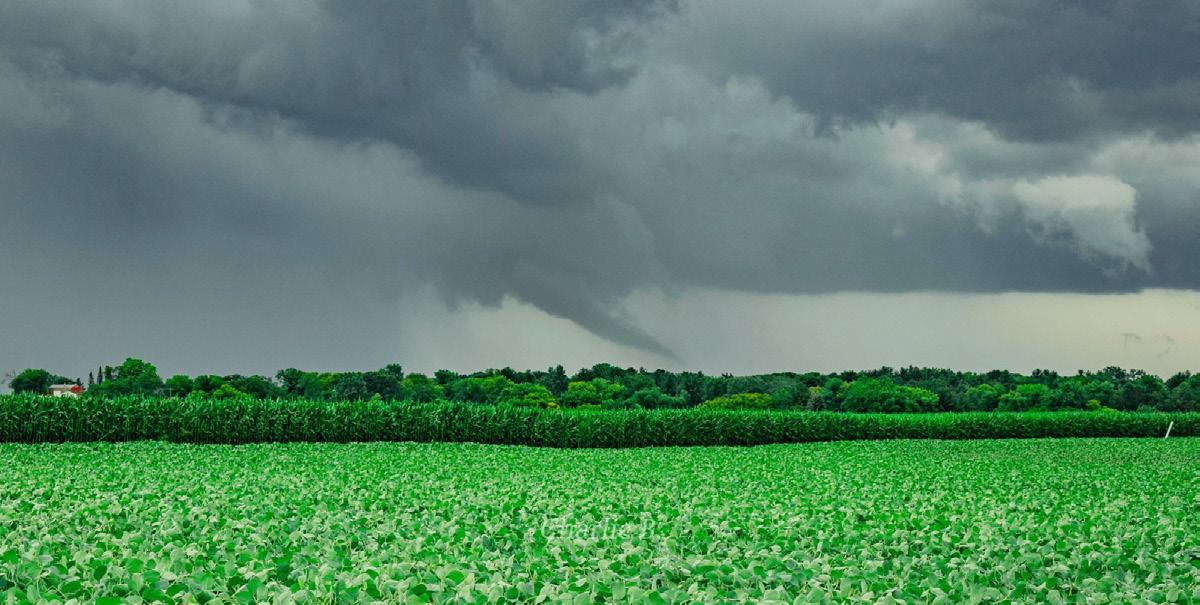
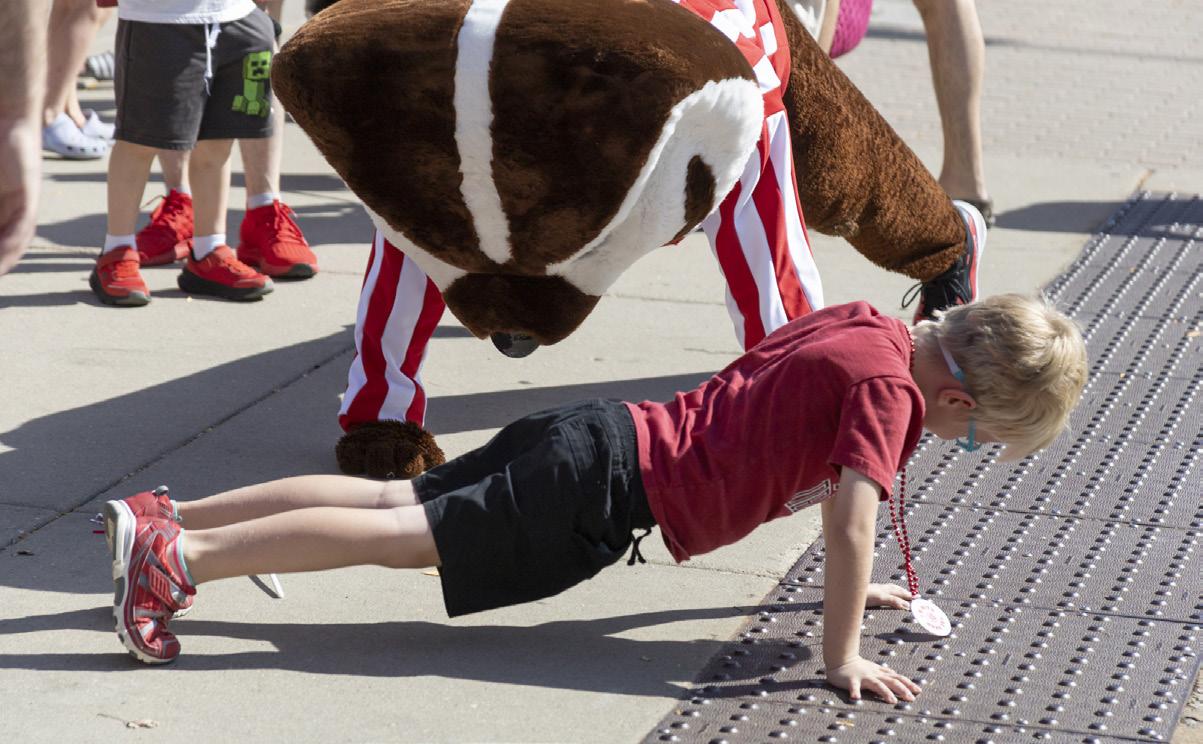
Bucky is celebrating through a Bucky appearance raffle for Wisconsin schools, a screening of the new PBS Wisconsin “Bucky!” docu-
mentary at Union South and another celebration during the volleyball game against Illinois on Bucky’s actual birthday, which is Oct. 2.
By Dylan Frank STAFF WRITER
University of Wisconsin-Madison students dressed in bright yellow banana suits and took to State Street Saturday, Sept. 26, for a bar crawl aimed at breaking two Guinness World Records.
Now in its second year at UW-Madison, LineLeap’s Banana Bar Crawl brought costumes, banana-themed apparel, themed challenges to the downtown stretch and a unique kind of whimsy.
UW-Madison was one of 80 U.S. colleges participating in the 2025 tour, which aims to set records for both the largest bar crawl and the most people dressed in banana costumes. Guinness has not yet released the results.
Seniors Mia Schmitt and Angelina Olsen joined the crawl in banana suits. While Schmitt first encountered the bananas in 2024, Olsen said she only recently discovered them.
“[We] come back from class, and you see people in banana suits. We didn’t really know why everyone was in banana suits,” Olsen said.
Schmitt said she saw the event grow from a few students to a campus-wide spectacle. “It started with one group of people in banana suits. I was like, ‘Maybe they’re just doing something fun?’ Then there was more,” she said, highlighting the trend’s growth.
Aiden Tighe and Luke De Haas are the co-founders of the Banana Bar Crawl. De Haas is also the CEO of Mosea in 2019, a marketing agency that aims to boost student-oriented companies. After Tighe and De Haas saw a TikTok video of a group doing a bar crawl in banana suits, they used Mosea to bring the Banana Bar Crawl to life in November 2023.
According to Celia Tise, the Banana Bar Crawl representative at UW-Madison, the setup process for the event begins by deter-
mining which schools to visit, typically three to four months in advance, before submitting advertisements and surveying local students for their favorite bars.
Participants had to purchase a $25 ticket through LineLeap, a mobile platform for joining and organizing nightlife events. The ticket included the complementary banana suit, drink specials and merchandise. Within designated pickup hours, ticketholders went to Red Rock Saloon the day before and the day of the crawl to receive their banana suits.
Tise said community building is the primary purpose behind the bar crawl. The crawl originated in Ontario, Canada, where the attendance at past events has climbed to roughly 3,500 participants –shy of the Guinness World Record for the largest bar crawl goal. The current record was set in Kansas City, Missouri, with 4,885 attendees in 2013.
Tise said the bar crawl’s purpose goes beyond record-setting.
“I love doing this because everybody loves a good opportunity to hang out,” Tise said. “I think whimsy is being lost all the time. What a great thing that one, I get to have a job where I get to go help people have fun. And then two, people get to dress up in banana costumes and feel free to just be as goofy and whimsical as they want for one day.”
Students embraced the absurdity. Jusuf Ademi called the crawl “almost as if someone reached into my dreams and made a bar crawl around my dreams.”
Others watched from the sidelines. Sophomore Tavio Revilla said she hadn’t known about the bar crawl until stumbling upon it.
“The fact that it’s for whimsy is something that I enjoy,” Revilla said. “I want there to be more whimsy. Especially in this time of political division. Maybe the bananas could bring people together.”
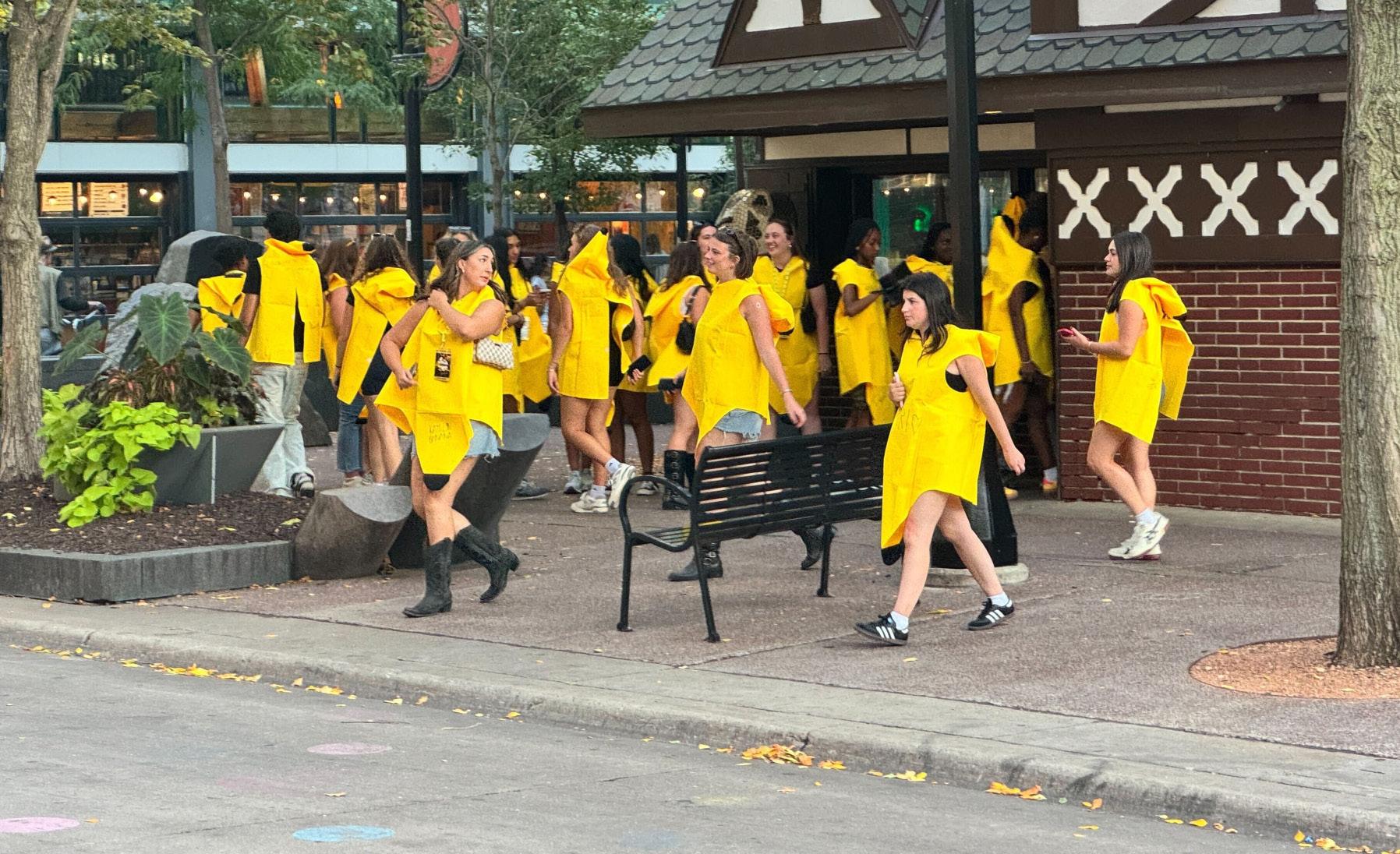
By Gabriela Verdeja STAFF WRITER
Miami-based artist and fashion designer Vic Garcia discussed energy, inclusivity and a hope to create a lasting impact on the art world during the University of WisconsinMadison Latine Heritage Month keynote speech.
This year’s Latine Heritage Month theme was “Amor Sin Fronteras,” which aims to recognize and appreciate the many diverse cultures across Latin America and the United States and how they flourish in today’s world.
When asked why he believed it is vital to have Latino voices in the art industry, Garcia joked, “I think it would be boring without them.”
Garcia, an artist of Cuban heritage, is known for his joyful characterbased artwork. His canvases and fashion line have attracted the attention of many notable public figures, including Manny Machado, Bad Bunny and Jennifer Lopez. Yet Garcia is always looking to new techniques to convey his passion. Currently, he is exploring
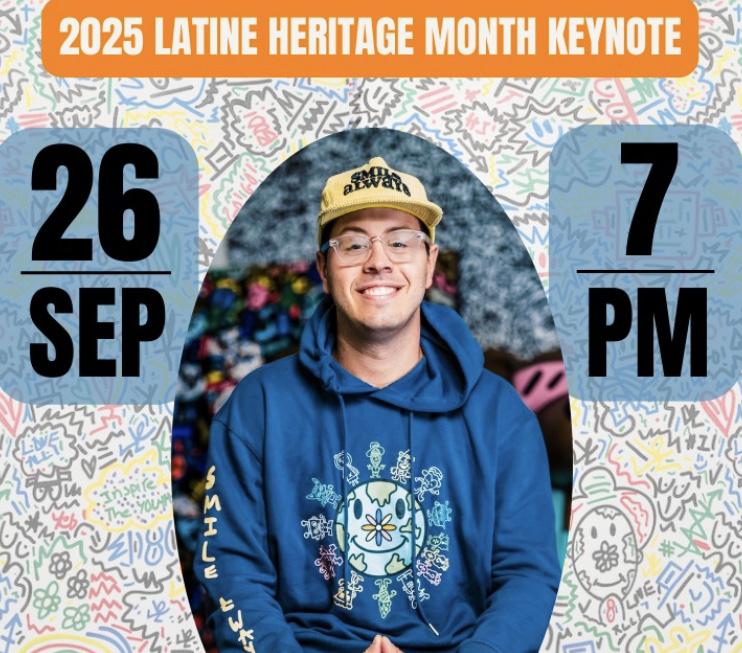
sculptures and vinyl toys based on the beloved characters from his “world.”
“If you can look at one of my canvases or one of the things I create…
and just connect with the world I’ve created for five ten minutes and I made you feel good, made you feel a sense of joy,” Garcia said, “I did my job.”
By Jane Dardik STAFF WRITER
After the University of WisconsinMadison shut down the Greater University Tutoring Service’s World Language Learners program earlier this fall, students have stepped up to fill the gap with a new organization: Language Connect.
World Language Learners, previously run by GUTS, was a program that had connected students to volunteer tutors for years and spanned dozens of languages.
But according to GUTS director Caitlin Farrell Haven, sustaining the program had become increasingly difficult.
“The decision to discontinue World Language Learners was not made lightly,” Farrell Haven said in an email. “After careful consideration, we determined that reallocating resources toward academic support programs with a more widespread need across campus was the most effective path forward.”
After finding out WLL discontinued, Fiona Freeman, a graduate student at UW-Madison, decided to start a new student organization with a few friends aimed at filling in the gaps that WLL left behind.
“I always used to sign up for World Language Learners,” Freeman said. “When I saw that it was removed from their website and discontinued, I said ‘Well I’ll start a club’ — just connecting students with other students and promoting language resources.”
Another challenge of keeping WLL open was recruiting and matching volunteer tutors, according to Farrell Haven. Still, she emphasized that GUTS hoped a new student group would step in to provide a similar service to students, a wish that has been granted.
Language Connect closely mirrors the old GUTS model but with some key changes. Instead of always relying on tutors with high proficiency, the group allows students to learn together in peer-to-peer settings if no advanced speaker is available. “We’re trying to facilitate learning together to reach their own language goals,” Freeman explained.
This flexibility has already drawn interest from students learning less commonly taught
languages, including indigenous ones. While GUTS has sometimes struggled to support “niche” languages due to the tutor requirement, Language Connect encourages any student to sign up, regardless of the language.
As a Registered Student Organization, Language Connect also hopes to be more responsive to feedback than a large campus service might be able to. “It will be easier for us to actually take feedback and make changes,” Freeman said.
So far, more than 100 students have joined. Although the organization is still in its early stages — it has no website and relies on the Wisconsin Involvement Network for sign-ups — interest has been strong.
However, the group still faces challenges. Without funding or the ability to offer official volunteer hours yet, attracting tutors and coordinating schedules has been tricky. “It’s been difficult pairing up as many students as we can based on their schedules,” Freeman noted. “Obviously, anything that involves student participation on a volunteer basis is hard to incentivize when there’s no monetary benefit.”
Despite these hurdles, feedback has been overwhelmingly positive. Students told Freeman they’re relieved to have an option after WLL’S closure, even if it looks a little different than before.
“For any students who might think that they speak a language no one’s learning, sign up,” Freeman said. “We’re learning through this process that there are different niches where students are learning these languages.”
Freeman said her ultimate goal is simple: to make sure UW-Madison students have a place to connect over language learning and culture. “We really just want to provide students with lots of opportunities to learn new languages,” she said.
For now, GUTS is focusing on other tutoring programs, but Farrell Haven pointed students interested in language practice directly to Language Connect. That endorsement, combined with the enthusiasm from students, suggests UW’s language learning community is here to stay.
Garcia said it was this hope that gave him the opportunity to speak in Madison.
Reflecting on his own roots, Garcia shared that his parents came to the U.S. with nothing, chasing the opportunity to live in a free country. Throughout his life, Garcia has chased opportunity too — using his to pursue his own dreams and passions in the art world. Positivity and hard work have been the foundation of the success he has found, he said.
“To be honest, I think any dream is possible with a lot of hard work and dedication,” he said. “It’s instilled in my roots and I continue to preach where I’m from.”
Garcia studied business marketing in Boston, and it was not until after he had earned his degree that he decided to pursue a full-time art career. At the time, one of his professors told Garcia his doodles would not get him anywhere in life, he recounted. Even now, Garcia said he had no idea his life would have taken this direction in college.
Garcia expressed his gratitude to be able to find his passion. Although he has already achieved great success, he has even bigger dreams he still wishes to accomplish. Garcia shared that while it is important to acknowledge past accomplishments, it is just as important to always look ahead and keep building towards what is coming next.
“Chase your dreams, knock on those doors if that door doesn’t open, keep knocking because eventually it will open,” he said. “This doesn’t come easy. I’ve been at this now probably ten years.”
All in all, Garcia’s love and passion for giving back to his community came across as an overarching theme of his speech.
Garcia said his “dream collaboration” would be to “give back to the community and work with underprivileged children that don’t have the opportunity to surround themselves with someone who’s [making art] at this level that I’m doing it at.”
By Audrey Lopez-Stane SENIOR STAFF WRITER
U.S. Rep. Mark Pocan, D-Madison, expressed concern for free speech at a press conference Sept. 24 as Wisconsinites and people across the country face job loss and other repercussions for remarks against recently killed conservative media personality Charlie Kirk.
Over 100 people across the U.S. faced repercussions for comments against Kirk after his assassination Sept. 10, including late night talk show host Jimmy Kimmel. His show was pulled from the air by ABC, a Disney subsidiary, for six days before returning.
Pocan said these firings are a result of “Trumpification.”
“They want every single one of those people to be fired from their jobs,” Pocan said. “I find that chilling.”
Multiple other Wisconsinites, particularly school faculty, have faced consequences from their employers for remarks against Kirk, while U.S. Rep Van Orden, R-Prairie du Chen, continues to threaten them with his proposed legislation.
“That’s something that... generally comes out of countries that end in -stan or third-world authoritarian countries, not the United States of America,” Pocan said. “We’re not Trumpistan.”
Ellsworth High School, located in western Wisconsin, also sparked controversy when math teacher Krista Lesiecki posted remarks against Kirk to social media.
“He said deaths are worth it for the Second Amendment. He spewed hate,” Lesiecki said in the post. “I disagree with his comment and essentially everything he stood for. But if you liked what he stood for, then you can’t be upset that he died. He fulfilled his destiny.”
Van Orden responded to Lesiecki’s remarks on X, threatening to “remove all federal funding, including grants and community directed projects for the entire city of Ellsworth unless this is rectified immediately.”
“I represent Ellsworth in Congress,” Van Orden said in the post. “It is a beautiful town full of wonderful people, except this one.” Pocan addressed the post at the conference and said it is largely ignorant of
free speech law.
Van Orden introduced a bill on Sept. 15 to defund entities employing people who “condone and celebrate political violence and domestic terrorism,” which experts say is likely unconstitutional.
Kirk founded Turning Point USA, a nonprofit organization advocating for conservative politics on college and university campuses. Wesley Nickchen, a member of the University of Wisconsin-Madison’s chapter who hosted Kirk last year, told The Daily Cardinal he believes Van Orden has the right to threaten funding to the city of Ellsworth.
“I think Congress has the full right to limit the amount of money going to anybody for any reason,” Nickchen said.
Like many Kirk supporters, Nickchen said he was disgusted by celebrations over Kirk’s death, adding while individuals have their own right to free speech, so do employers.
“If someone specifies that they’re happy on social media that Charlie Kirk was assassinated,” Nickchen said, “I think that it’s their employer’s job to fire them.”
Pocan referenced a study claiming to have identified over 60,000 people criticizing Kirk or celebrating his death. While Pocan condemned violent speech, he said people are “allowed to be an idiot and say bad things,” even if the speech was against Kirk.

By Avery Chheda STAFF WRITER
Most Division I athletes juggle over 60 hour weeks of training and classes. For Wisconsin Badgers soccer player Matthew Zachemski, that’s just the beginning. Between team lifts at dawn and late night lectures, you can find Zachemski mixing his own essential oil colognes for his small business — Organic Scent.
What started as a passion project quickly evolved into a mission: a healthier, more transparent alternative to mainstream colognes.
When summer practices left Zachemski on campus with long stretches of free time, he knew it was the perfect chance to start Organic Scent. Armed with bottles from Hobby Lobby and 15 essential oils he sourced online, Zachemski said his fragrance business began to bloom, “right on the kitchen table.”
With the weather cooling down, Zachemski’s kitchen is reminiscent of an autumnal farmer’s market as he’s busy creating classic fall scents, including notes of pumpkin and cinnamon. While Zachemski knew he wanted to create a product to help people, he didn’t always know what.
“I [thought], what healthy alternative should I make,” Zachemski told The Daily Cardinal. After contemplating creating a healthier protein bar or dessert, Zachemski’s parents helped him settle on the idea of a safer, simpler cologne.
“With normal big market colognes, they add a lot of chemicals to enhance the scent that aren’t necessarily good for your body,” Zachemski said.
Some ingredients commonly found in cologne and perfume like phthalates have been found to act as endocrine disrupters, affecting hormonal balance and potentially posing serious health issues.
Not only can these chemicals be unsafe, but fragrance companies make it difficult for consumers to know exact ingredients. U.S. regulations allow certain ingredients to be labeled as “fragrance” or “flavor,” a move that protects a company’s “trade secrets” but can obscure the product’s actual content.
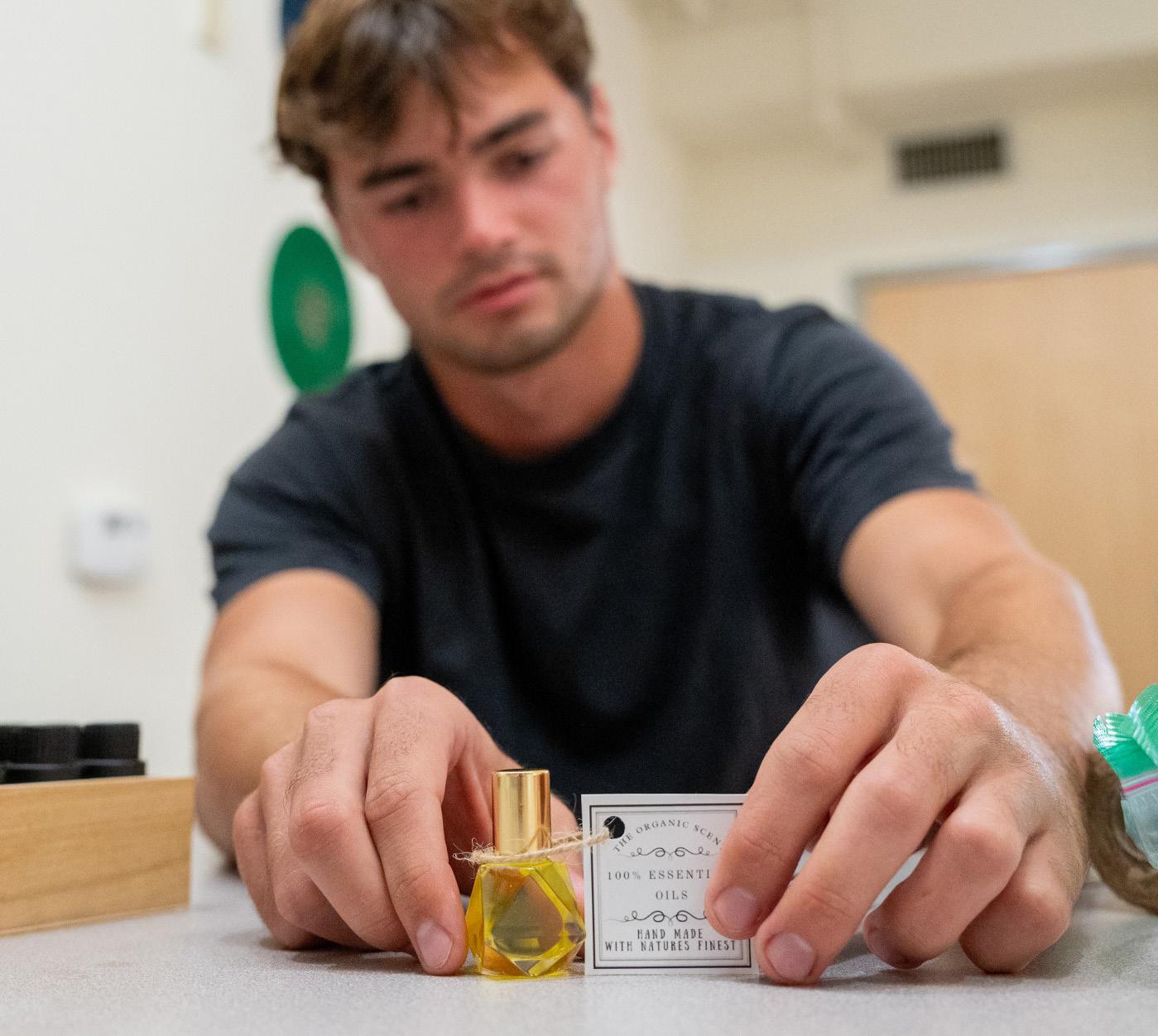
“Creating a brand that had [every] ingredient [listed] with transparency of where they come from and how I make it felt like it could be a better fit for people,” Zachemski said.
As the fall semester started and responsibilities piled up, Zachemski’s experience staying disciplined as a D1 athlete proved extremely useful.
“There [were] some mornings when I [didn’t] want to wake up at six in the morning, but I still [had] to,” Zachemski said. “I think that translates to the business world [when] you don’t want to wake up and do it, but you know you have to so the discipline takes place.”
With 90 hours of programming a week between soccer seven days a week, 17 course credits and Organic Scent, Zachemski has had to make sacrifices.
“There are times where I want to be talking to friends or family when I have homework and athletic stuff to do,” Zachemski said. “I find what I think is most important at the time
and prioritize that.”
Zachemski’s ability to juggle his different roles all comes down to routine.
“I plan everything out before the day starts,” Zachemski said. “Keeping a tab on what to do [and] where to be I think really, really helps balance it out.” He starts his day with optimism and a planner, ending it with reflecting and journaling.
It’s not just mindfulness that centers Zachemski. His family, friends and the rest of the Badgers soccer program have been backing Organic Scent since day one. From making purchases to spreading the word, Zachemski’s support system has proved strong.
“A lot of [my teammates] were very curious, asking questions and supporting me right away,” he said.
Their interest didn’t go unnoticed.
“I was really thankful for that,” Zachemski said.
As Organic Scent grows, Zachemski’s has big plans for the future. Behind the
By Alaina Walsh ASSOCIATES NEWS EDITOR
The University of WisconsinMadison international student enrollment fell to its lowest point in at least a decade, reflecting a national trend caused by shifting visa policies in the United States.
More than 67,000 students applied to UW-Madison this admission cycle, making it the most competitive applicant pool the university has ever seen. But the number of enrolled international students dropped by 30%, reaching its lowest point since at least 2013.
UW-Madison’s international student count fell to 5,322.
Broader forces beyond campus are complicating international recruitment. At the federal level, a series of changes to visa processing, status revocation and stay limits have introduced uncertainty for current and prospective international students.
UW-Madison moved “proactively” over the summer to mitigate the
downward trend by boosting support for visa processes and facilitating students’ travel to Wisconsin, according to an email statement from UW-Madison Interim Vice Provost for Enrollment Management Scott Owczarek.
Those efforts were designed to “offset uncertainty over the climate for international students and changes to visa policies,” he said.
“International students bring research expertise and global perspectives that strengthen UW-Madison’s academic excellence and enrich campus life for all students,” Owczarek added, outlining the stakes for the university’s broader mission.
Between May 27 and June 18 U.S. consulates paused new student visa interview appointments — a critical window for fall arrivals — to implement new social media vetting protocols. Once resumed, consulates were required to restore appointment availability within five days.
At the same time, the Department
of Homeland Security proposed capping how long foreign students can remain in the U.S. by replacing the traditional “duration of status” rule with a fixed-term limit, like up to four years.
U.S. immigration authorities previously revoked or terminated thousands of student and alumni visas earlier this year, including 26 at UW-Madison, generating fear and concern across campuses.
Though students have since had their status restored through litigation, the abrupt enforcement actions cause concern for the future of international students.
National data also reflects the broader trend. Student arrivals to the U.S. in August 2025 dropped 19% compared with the previous year, the lowest August total since the COVID-19 pandemic.
The decline could shrink the diversity of research perspectives on campus, particularly in graduate programs that rely heavily on international students.
scenes, he’s planning on developing a website and Shopify page to increase marketing for the brand.
Until the website is launched, customers can place orders for Zachemski’s original five scents through Organic Scent’s Instagram using a Google form. For $10 per 8oz bottle or three bottles for $25, buyers can choose from the five scents Zachemski created: Citrus Serenity, Sacred Orchard, Misty Grove, Cool Mint Forest and Resinous Dawn.
On top of these five scents, clients are even able to customize their own scent using Zachemski’s 15 base oils.
While Zachemski is enjoying Organic Scent and the lessons it’s taught for now, it’s only the first part of his dream.
“One of my goals is to be able to graduate and start my own business,” Zachemski said.
In the meantime, the management and entrepreneurship major has his heart and feet set on professional soccer.
“[Soccer] would be number one. Once I finish [my] soccer career, that’s when I can focus more on the business [side] of things,” Zachemski said. “You can only pursue soccer for so long. And if there’s a time to do it, it’s now, not later.”
It’s not uncommon for retired soccer players to use their influence and resources to build businesses. Right now, Zachemski said his platform as a student-athlete is not connected to Organic Scent. With connections in various parts of campus and a growing athletic profile, that’s sure to change soon.
For Zachemski, Organic Scent is more than a business. Zachemski’s business model is rooted in his desire to help, and chasing impact over profit sets him apart from the crowd. He urges other aspiring student entrepreneurs to follow the same path.
“Focus on a cause [you] find important, and something you find joy in, not something [you] see potential money in,” Zachemski said. “I think the satisfaction that you get from helping other people and doing something you love is more important than anything else.”
By Luca Muehlbauer STAFF WRITER
The University of WisconsinMadison placed in the top 40 institutions nationwide for undergraduate education for the fourth year in a row, according to recent rankings by U.S. News and World Report’s Best Colleges.
Out of the 438 public and private universities ranked, UW-Madison ranked 36th overall. Among public universities, it ranked 12th — a slight increase from last year, where it ranked 39th and 13th respectively.
“Rankings are just one of many measures of any school’s success, including ours, but I am gratified to see our excellence recognized,” Chancellor Jennifer Mnookin said in a statement.
The university also ranked 47th for “Best Value Schools,” jumping 42 places since last year.
Ranking factors include student outcomes — measuring a
school’s success in setting students up for a brighter future — and peer assessment, which factors in aspects such as innovative teaching and institutional health. The ranking also considers faculty resources and research, as well as standardized tests, like median SAT/ACT scores.
UW-Madison continues to have high-achieving undergraduate programs, with various schools ranking in the top 20 nationwide and in the top 10 for public universities. The real estate program and the school of education are both the top ranked programs in the country.
“This university is dedicated both to meeting the highest standards of educational excellence across a tremendous array of academic disciplines and to advancing the kinds of fresh ideas and innovations in teaching and learning that will shape the future of education,” Mnookin said.
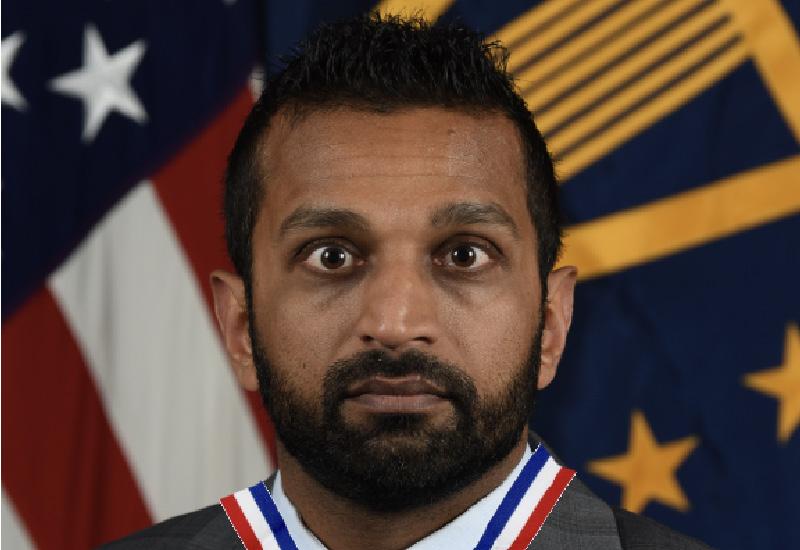
By Dominic Violante
BEET EDITOR
All articles featured in The Beet are creative, satirical and/or entirely fictional pieces. They are fully intended as such and should not be taken seriously as news.
FBI Director Kash Patel won the 2025 National Staring Contest held
Wednesday, in a stunning show of personal resilience.
In a statement released on his official X account, Patel said, “Years of hard work and patience have finally paid off, today is the proudest moment of my life, things could not be going better!”
While some critics have argued Patel has neglected his duties as FBI director,
and his time spent staring blankly at walls for hours on end could have been better spent investigating the assassination of political pundit, Charlie Kirk, or to investigate the associates of disgraced New York financier, Jeffrey Epstein, Patel responded saying, “some things in life are more important than work.”
By Dominic Violante
BEET EDITOR
All articles featured in The Beet are creative, satirical and/or entirely fictional pieces. They are fully intended as such and should not be taken seriously as news.
New York Mayoral candidate and former governor of New York, Andrew Cuomo, has won an endorsement from Americans Against the Elderly, a large grassroots organization focused on “inflicting as much harm onto America’s elderly as humanly possible,” according to their official website.
In the announcement, the organization’s leader Max
Kreshler said “many candidates have claimed to have a hatred for the elderly in an effort to win our endorsement, but only Mr. Cuomo has the stellar record to prove it!”
During his speech, Kreshler went into deep detail about Cuomo’s Covid quarantine plan, which involved sending covid patients into nursing homes and resulted in over 12,000 deaths, Kreshler called this “patriotic heroism.” Cuomo has graciously accepted the endorsement and is planning to hold a rally with the organization later this week as it boycotts one of New York city’s largest nursing homes.



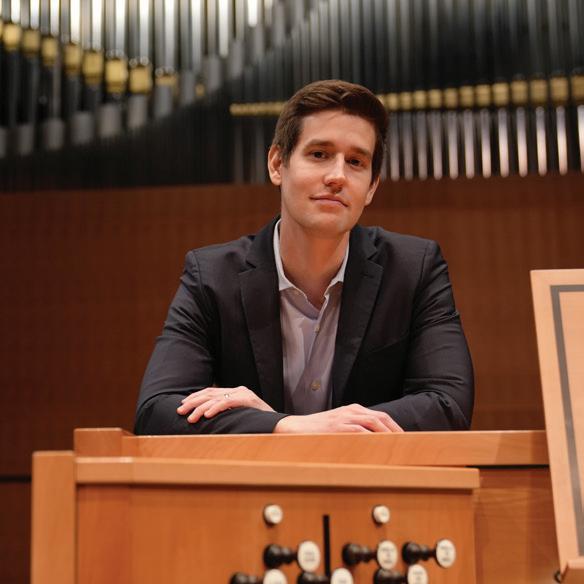
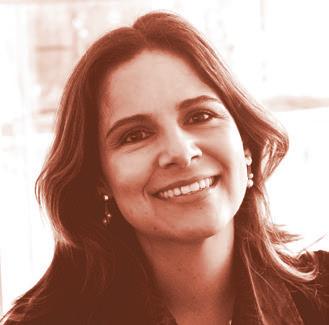

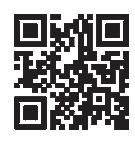
By Gabi Marmet STAFF WRITER
The University of WisconsinMadison’s Oktoberfest celebration featured traditional Bavarian food, live music and games along with crafts for students and the public to participate in last weekend. Blissful music emerged from the eight tuba players on the union stage, and the Memorial Union restaurants changed their menu offering Pork Schnitzel, Spaetzle and German potato salad.
This German festival began in 1810 as a celebration for the royal wedding of Crown Prince Ludwig and Princess Therese of Bavaria. During the celebration, the public would watch horse races, listen and dance to traditional music and engage in large feasts.
As time passed, the event became known as Oktoberfest, and traditions slightly shifted. Oktoberfest today is celebrated in Munich with traditional German and Bavarian music, food and a massive beer festival on the last weekend before October.
“I learned how fun their celebrations are and the different types of customs they have to celebrate Oktoberfest,”

UW-Madison freshman Grace Gellert said. Attendees gathered with their traditional food and beer pitchers to watch the tuba show. The Madison Tuba Band provided energetic and joyful entertainment for the public. They played traditional German music, UW-Madison’s “Varsity” and Neil Diamond’s “Sweet Caroline.” The lead member of the band told the public to stand up and participate in
a chant. His humor brought laughs among the crowd as they engaged in his cheer about beer.
Freshman Arielle Zisman said she “loved getting to see all of the people that were really excited to be there, singing songs together and seeing the older audience was really sweet.”
For the second day of Oktoberfest, WUD Global Connections brought a wooden heart ornament station to the festival. Hosted by Wheelhouse Studios, the Stein and Ornament decoration stand allowed people to draw and decorate clay cookie hearts for necklaces or ornaments.
WUD Games hosted Euchre games that anybody was welcome to join. This game originated in Germany during the 18th century and was brought to America by German immigrants. Students were available to join in this four person game and teach the rules.
Through the Wisconsin Union’s execution of Oktoberfest, UW students experienced their own slice of German culture, an ocean and thousands of miles away, in Madison.
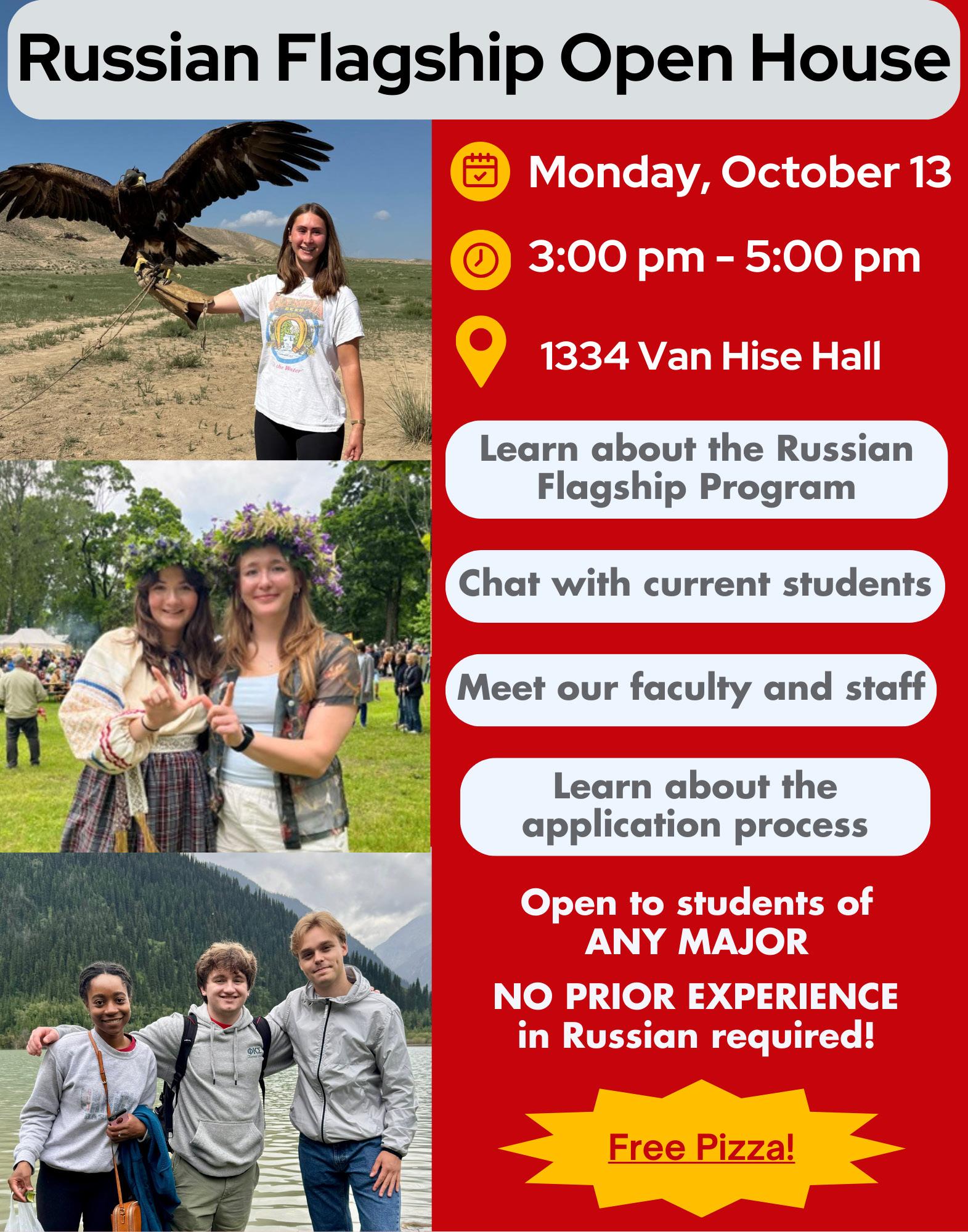
Whilenotthetypicalcat-owners,studentsareincreasinglyadoptingcats, toutingthebenefitsofcatownership.
By Avery Chheda STAFF WRITER
Two University of Wisconsin-Madison students have added parenting to their list of skills this semester. Between classes and extracurriculars, these badgers scoop litter or trim claws for their feline friend.
For 19-year-old student Keira Dunn, her cat’s companionship is the perfect end to a stressful day.
“Mr. Cheese [usually doesn’t] see anyone all day, so when I get home, he curls up next to me,” Dunn said. “It makes everything feel a lot less lonely.”
For college students like Dunn, pets offer so much more than just occasional company. They act as a built-in support system, offering emotional support and the occasional meow. UW-Madison sophomore Ruby Davies-Larson says her cat helps her decompress.
“It’s comforting,” DaviesLarson said. “She reminds me of home and takes me out of that academic mindset.”
Both students see their pets as mood boosters. Even when they’re not purring next to you in bed, cats’ mere existence can’t help but bring you joy.
“[Mr. Cheese] can, like, jump pretty high,” Dunn said. “We have a string attached to a
stick [and when we play with him], he can jump super, super high, which is kind of fun.”
Raising cats in college presents a unique set of challenges, but don’t underestimate these Badgers.
“Some people think college students aren’t capable of providing a good life to their pets, but I don’t think that’s true,” Dunn said. “[My roommate], Madison, spoils the crap out of Mr. Cheese. He has such a good life.”
Davies-Larson has had no problem balancing academics with taking care of her cat, Lucky. In fact, the biggest challenge presented comes from Lucky herself. She’s an escape artist.
“She will open the door until [she will] strategically hide behind it so you can’t see her,” Davies-Larson said. “Then when you open the door, like a crack, she bolts out the door.”
If you grew up petless thanks to a parent’s allergies like Dunn, college may be the perfect time to get your first pet.
“If you have the money and space and you’re able to care for it properly, I think [owning a cat] is really fun,” Davies-Larson said. “It’s definitely really helpful for stress and taking you away from the studying mindset.”

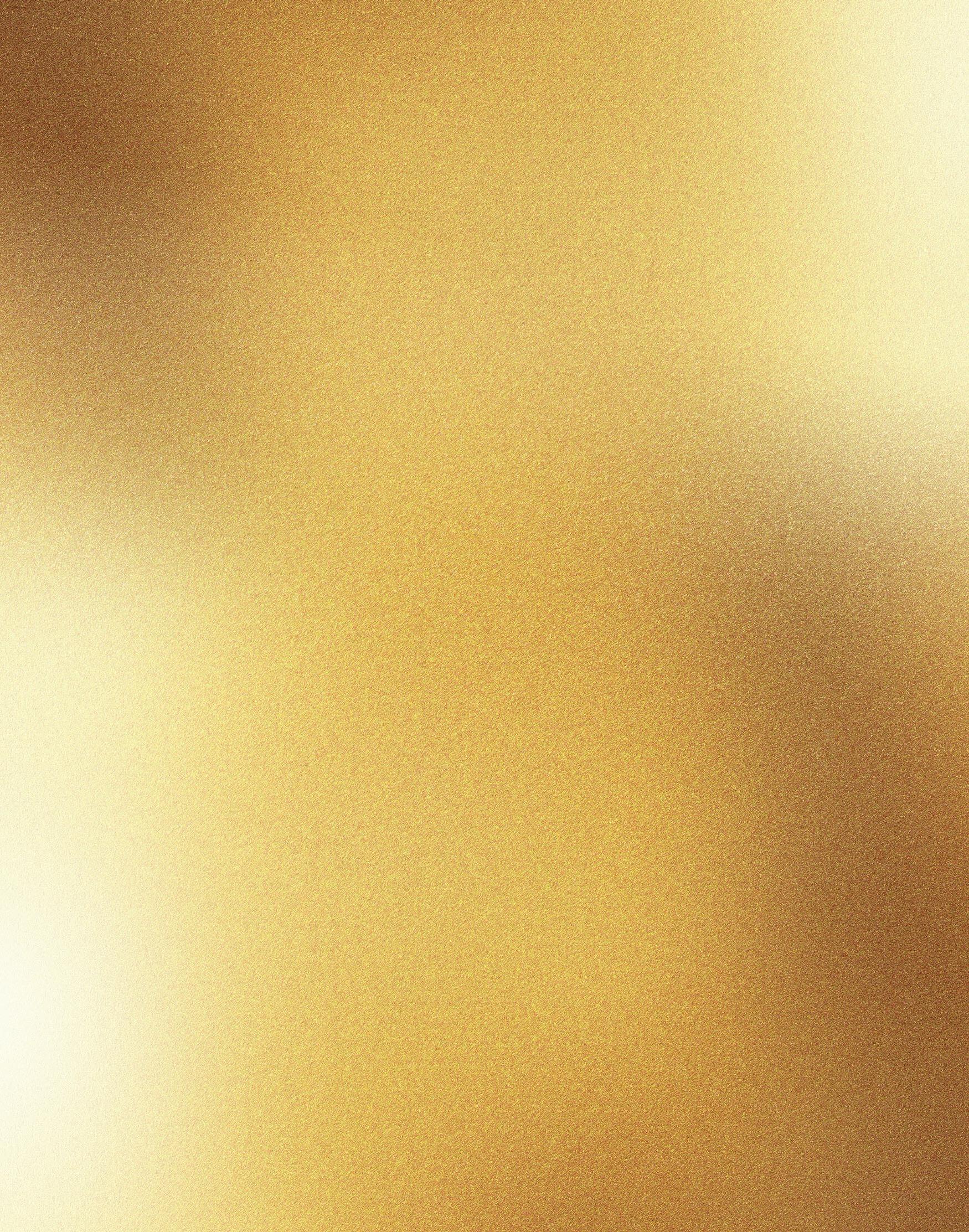

3 MONTHS FREE
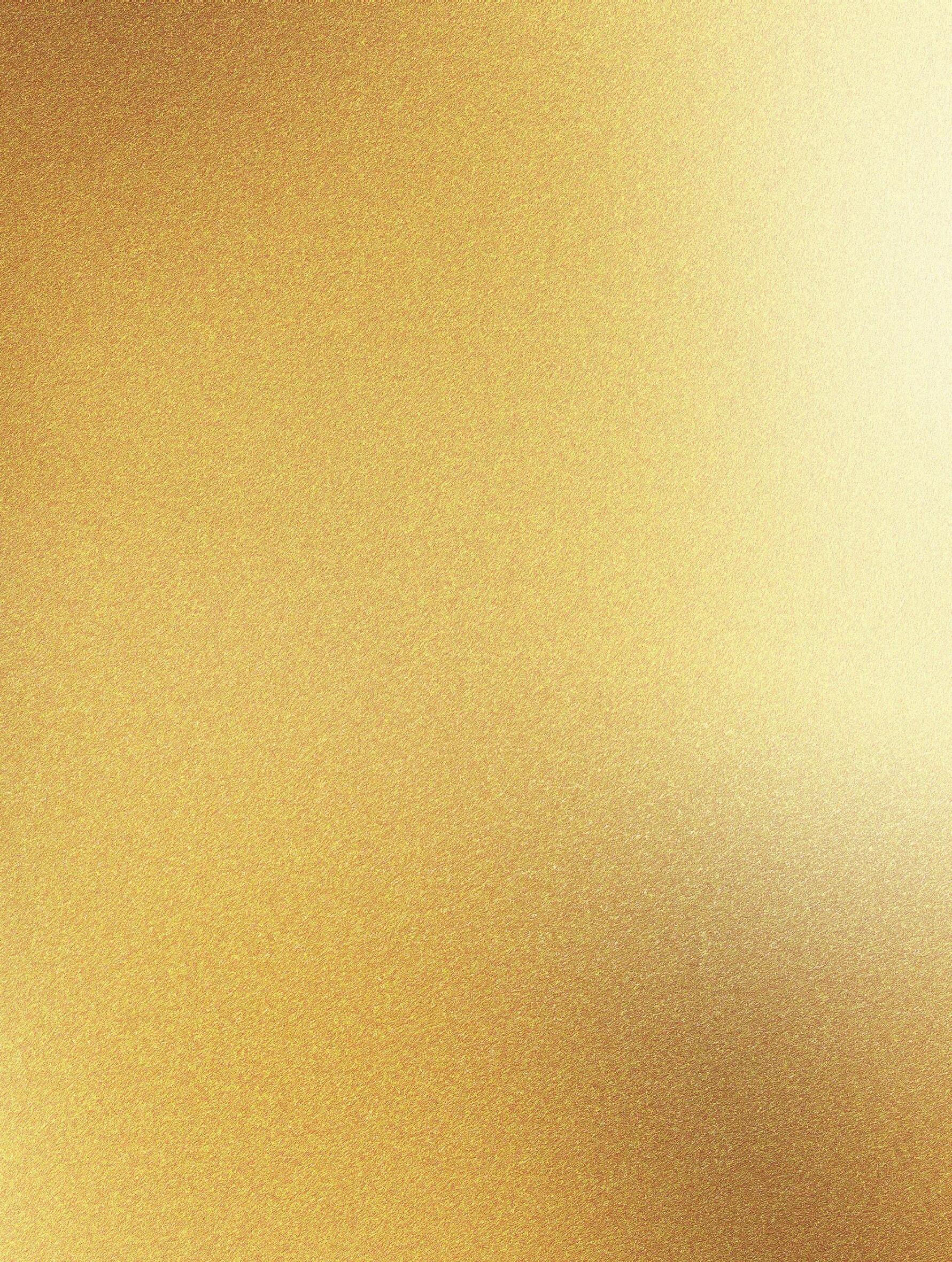


‘Toshiko
retrospective on the artist’s
This posthumous retrospective brings Toshiko
By Jackson Baker STAFF WRITER
Seventy years after teaching at UW-Madison, the abstract art of Toshiko Takaezu returns this fall through her posthumous retrospective exhibition: “Toshiko Takaezu: Worlds Within.”
Born in a small Hawaiian town to Japanese emigré parents, Toshiko Takaezu (1922-2011) was an innovative ceramic abstractionist and master of technique across multiple mediums. Renowned for her signature closed forms – bound ceramic sculptures that enclose “hidden worlds within” – the artist utilized these three dimensional forms as a canvas for expres-
work back to UW-Madison
sion. Takaezu was also a student and educator, spending 25 years in academia. She taught arts at several institutions throughout her life, including a brief stint at the University of WisconsinMadison from 1954-1955.
“It’s exciting that many of the venues on the tour are places that connect directly with Takaezu’s personal history, including UW–Madison where she taught early in her career,” said exhibition cocurator Kate Wiener of The Noguchi Foundation.
“We learned from Takaezu every step of the way, and many of the installations in the show are directly inspired by histori-
cal arrangements,” she said.
The first ever retrospective dedicated to Takaezu shows her art spanning over six decades, transitioning from her first work as a student in Hawaii to the later masterpieces she created while teaching at Princeton.
The exhibition contains a sizable collection of the artist’s ceramics, including the powerful installation of massive closed forms titled “Star Series”. Aside from ceramics, the collection is also host to a number of other works across several mediums. This includes her expressive acrylic paintings and woven textiles, which are
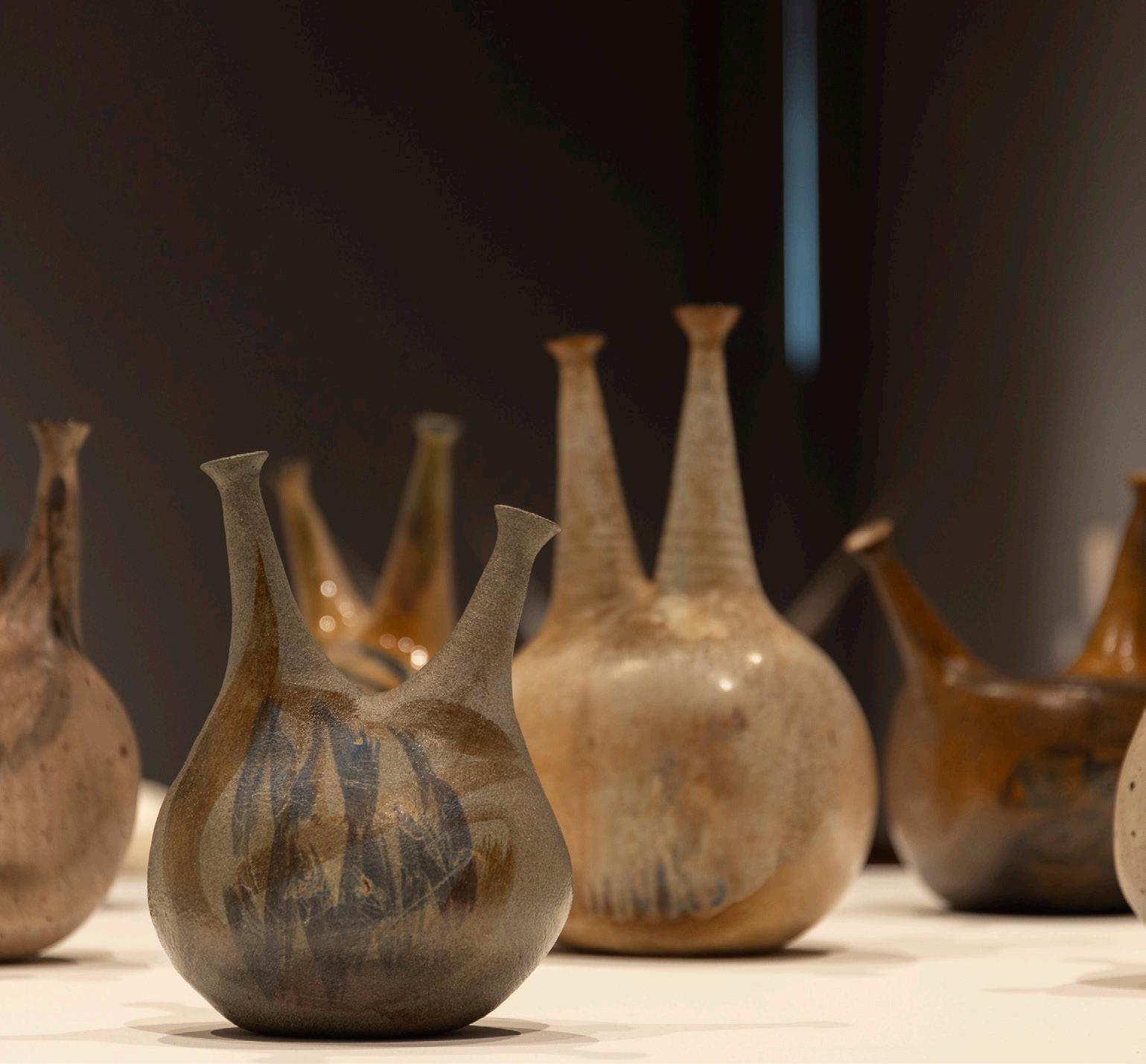

undoubtedly influenced by the artist’s roots in Hawaii.
Supplementing the artwork on display, Pulitzer Prize finalist in music Leilehua Lanzilotti, produced a video installation that illuminates the key role that sound plays in Takaezu’s art. Thanks to the talent of co-curators Kate Wiener and Glenn Adamson, “Toshiko Takaezu: Worlds Within” successfully paints a comprehensive and magnificent tableau of the artist’s life.
“When I first saw them installed this way at the Noguchi Museum, I was struck by the sheer physical-
ity of the experience.” says Chazen Museum of Art’s Chief Curator, Katherine Alcauskas.
“There’s a dynamic energy in moving among them, feeling their presence surround you. We’re proud to be the only other venue on the tour offering this immersive installation—it’s a rare and special opportunity,” she said.
Takaezu’s exhibition will be on display at the Chazen Museum of Art until Dec. 23. of this year. At the museum on Oct. 8. there will be a lecture led by Adamson at 5 p.m. followed by a public reception held in the Mead Witter Lobby at 6 p.m.
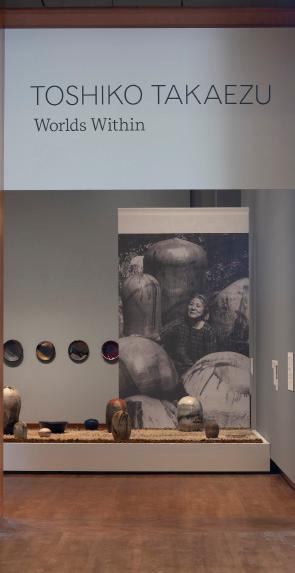
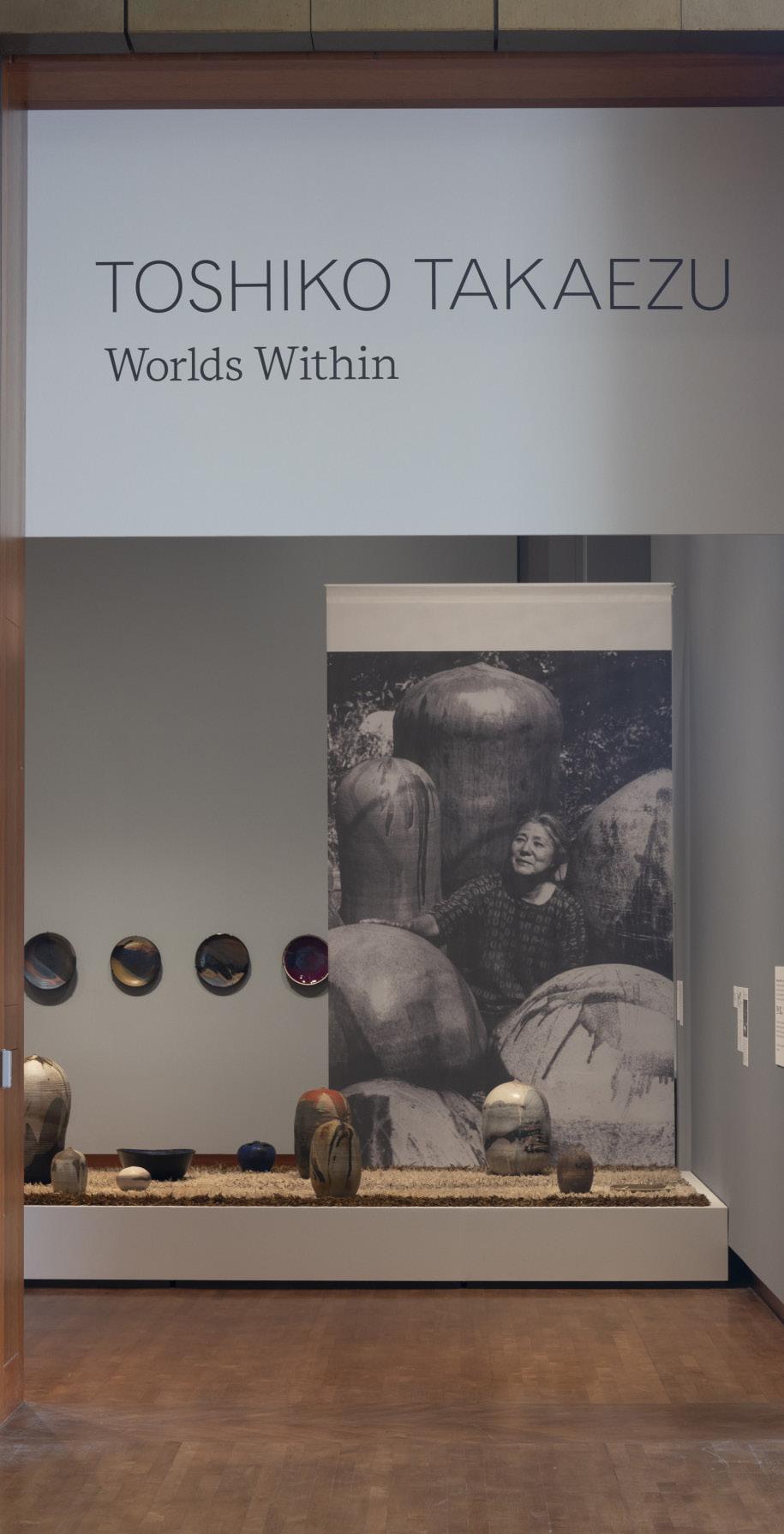
Let your choice of brother inform your choice of fall television.

By Harper Sollish STAFF WRITER
I stood on Library Mall for an hour on Sept. 24 with a poster asking people to vote on an important question: were they “Team Conrad” or “Team Jeremiah”? The verdict? 113 votes for “Team Conrad” and 11 for “Team Jeremiah.”
While the airing of “The Summer I Turned Pretty’s” third and final season may have officially ended on Sept. 17, the world has not moved on.
The Prime Video series follows brothers Conrad and Jeremiah Fisher and their lifelong battle to charm family friend Belly Conklin.
Ultimately, Belly must choose between the brothers, inspiring much fan debate.
Most people that came up to vote for Conrad were surprised with the results: “Why would someone even vote for Jeremiah?” with many shouting there is only “one right answer.”
There were even a few writein votes. One incredibly passionate “Team Jeremiah” voter also wrote in “Team Belly” after giving me her Jeremiah defense, and “Team Cam,” a reference to a character from Season 1, also got a vote. One group was so fed up with the entire show that “They all suck” got 5 votes too!
While the University of
Wisconsin-Madison seems to be very Conrad-biased, Jeremiah still had some fans that made sure their vote was counted. One asked me to explain in 60 seconds why everyone was voting for Conrad and still decided to vote for Jeremiah in the end.
After my hour standing in Library Mall collecting opinions, it was made clear that fandom is serious business. But the good news is, fall TV won’t make you choose just one side.
No matter which half of the Fisher family you are loyal to, there is a binge watch waiting for you just around the corner.
Continue reading at dailycardinal.com
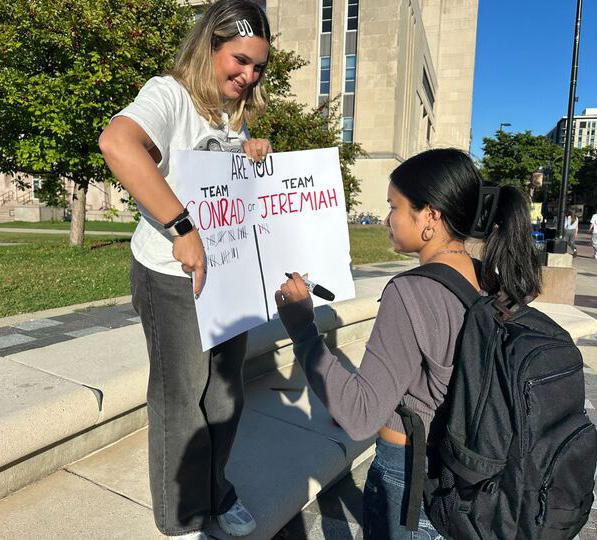
By Dani Nisbet STAFF WRITER
Rock and blues artist A.J. Croce played his father, legendary folk singer Jim Croce’s, biggest hits during his “Croce plays Croce” tour at the Barrymore Theatre Sept. 23.
In the 30 years of the younger Croce’s music career, he never once touched one of his father’s songs live — until now.
Croce got the show going with some of his father’s classics, including “Working at the Car Wash Blues” and “Don’t Mess Around with Jim.” He eased the audience into the show with wry humor, joking at one point that “tap shoes are like prozac for your feet.”
The audience clapped along when they saw the chance clap, and shouted out their favorite Jim Croce songs when he asked for requests.
Rock, folk, blues and country music mixed together to create distinct and lively sounds. Ray Charles, Hank Williams and Little Richard were big inspirations for Croce, and there were times where the influence of old blues and jazz crept through.
Croce also swapped between multiple guitars, a traditional piano and an electric piano, throughout the show. Another highlight of the show was James Penneback, who played the fiddle during songs “Complications of Heart,” “Speedball Tucker” and “Operator (That’s Not the Way It Feels).”
“Hey Margarita” was a highlight of the set. The track was produced by Shooter Jenning for Croce’s newest album, “Heart of the Eternals,” mixing a rock ‘n’ roll chorus with a plucky bridge and a catchy, memorable rhythm. To any classic rock fan, this one is a must-listen.
Another memorable piece played by Croce was “Turned Around,” which combines folk and rock in a slow, raspy melody. The backing vocals hum and chime in throughout, making the song reminiscent of ‘50s-’60s blues.
A.J. Croce is an engaging performer who’s been in the business for a while — and it shows. He played a mix of his father’s songs and his own, taking requests and frequently joking with members of the audience. Between each song, he slipped in stories from his own life and his fathers life.
Jim Croce passed away on Sept. 10, 1973 at age 30 in a tragic plane crash. His time in the spotlight was brief, with his breakout album just released that prior year. A.J. Croce was only two years old at the time of his father’s death.
The junior Croce ended the show with “I’ve Got a Name,” a song about finally finding success in the music industry, and “Time in a Bottle,” a song about his son. These songs had every member of the audience up on their feet and made for a beautiful finale to an otherwise rocking show.

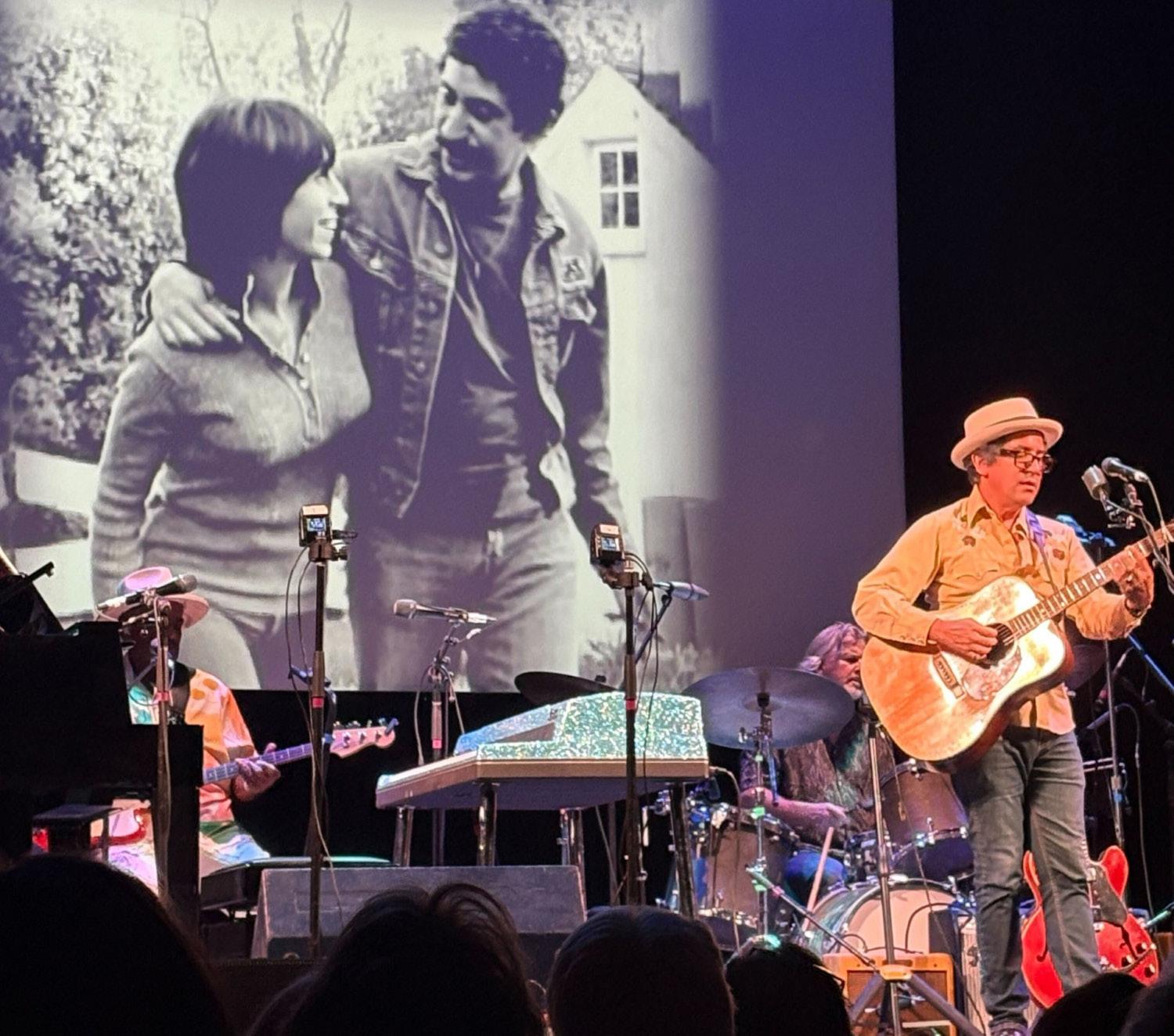
By Jonathan Mintz SENIOR STAFF WRITER
Sophomore forward Maggie Scannell scored four goals as the No. 1 Badgers made quick work of WCHA foes Bemidji State in their opening series against the Bemidji State Beavers.
Now where were we?
When the Badgers last took the ice, they were lifting the national championship trophy after a clutch performance from now-senior forward Kirsten Simms in the national championship game against Ohio State, capping off arguably the greatest season in program history.
Forward Casey O’Brien had just won the Patty Kazmaier Award for the best player in women’s college hockey after breaking the Wisconsin career points record formerly held by
the great Hilary Knight. However, now the hunt begins for championship number nine. After losing O’Brien, as well as forward Sarah Wozniewicz, defender Katie Kotlowski, and goaltender Quinn Kuntz, the Badgers retooled with six incoming freshmen. With the Olympics looming and Wisconsin losing up to six of their players for most of February, they’ll need to hit the ground running if they want to maximize their chances to repeat as national champions.
Wisconsin hits the ground running on Friday
Wisconsin entered the weekend with a 19-game win streak against the Bemidji State Beavers. Czech freshman forward Adéla Šapovalivová, the
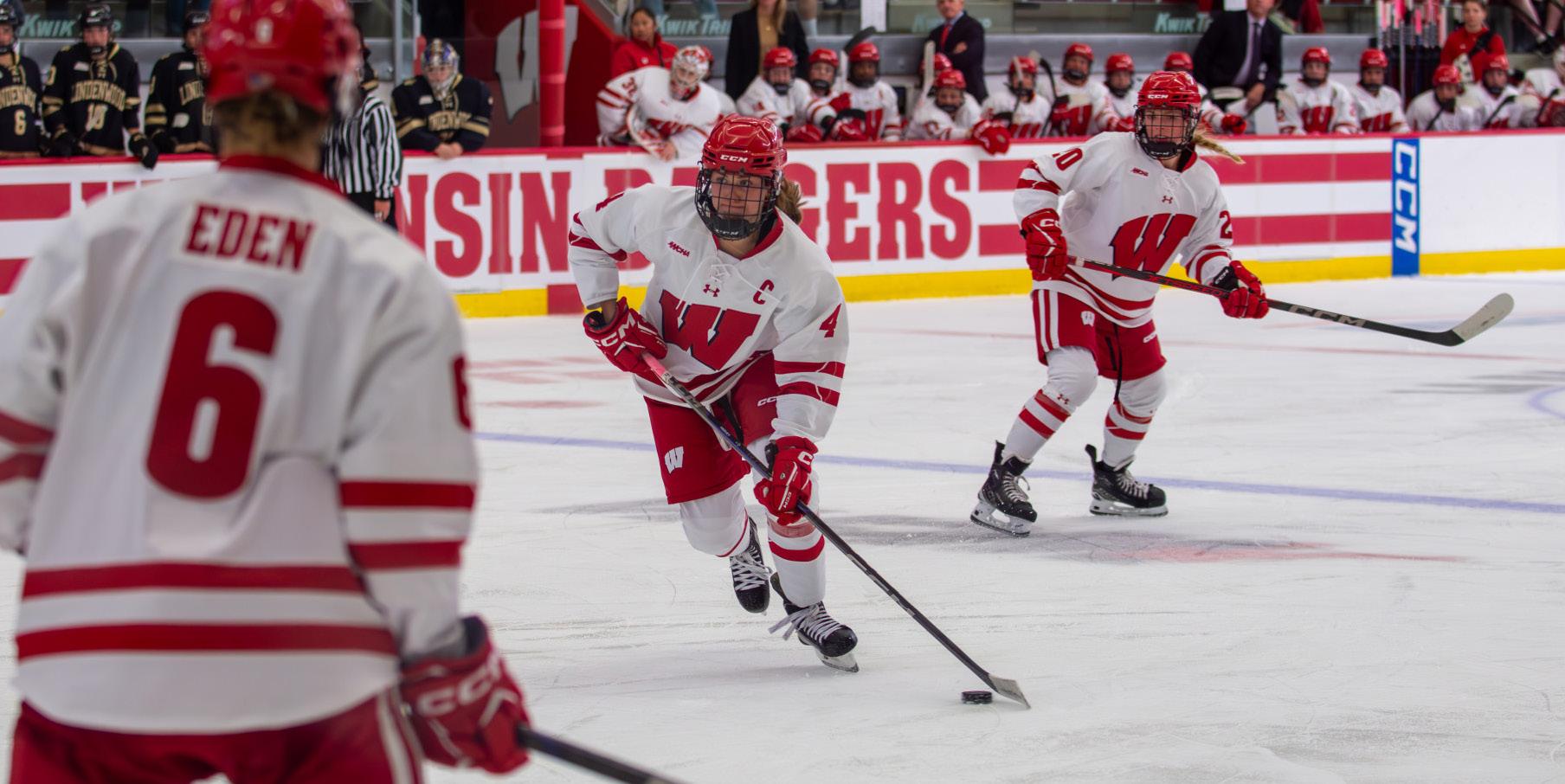
first European-born player in Badger history, started on the first line and senior forward Laila Edwards started at defense, the position she plays for the U.S. National Team.
The first few minutes were slow, with Wisconsin dominating possession and getting a few high-quality chances in as the clock approached the 10 minute mark in the first period. With about 4:20 left in the first period, Simms got the puck from fifth-year forward Lacey Eden and made her own magic, driving into the lower right side and wristing the puck above the glove of BSU goaltender Katilinn Groess to open the scoring on Wisconsin’s 2025-26 season. After dangerous looks from Eden and sophomore forward Hannah Halverson, the first period drew to a close.
About eight minutes into the second period, Wisconsin nearly added to their lead when a puck found itself meandering towards the goal line, but a sharp play from the Bemidji State defense prevented what could’ve been a cheap goal.
About a minute later, however, after Groess lost her glove, Eden scored from the left side to take a 2-0 lead while Groess was out of position. That two goal lead wouldn’t last long, as Maddie Kaiser’s missile from
the left point found its way behind junior goaltender Ava McNaughton to cut the lead to 2-1 just one minute later.
The goal gave the Beavers a boost of energy, but a trio of chances from Eden, Edwards and captain Carolina Harvey swung that momentum back towards Wisconsin in the span of only 15 seconds.
Scannell would be the one to capitalize, bouncing the puck off of a Bemidji State defender’s skate and between the legs of Groess to take a two-goal lead.
Three minutes later, Scannell scored her second goal after a puck bounced into the air and somehow found its way into the net, leaving even the Wisconsin players confused as to who actually scored. Simms and junior forward Cassie Hall each added a goal before the second period ended.
Three minutes into the third period, freshman forward Charlotte Pieckenhagen took advantage of a wide-open net to score her first goal as a Badger. Over the next six minutes, Bemidji’s Kate Johnson and Wisconsin’s Eden would trade goals before Scannell scored her third goal halfway through the third period, giving her a hat trick.
McNaughton stopped 14 of 16 shots she faced as the Badgers took a 9-2 opening night win.
Wisconsin keeps trucking on Saturday
Technical errors on the part of Big Ten Plus meant nobody but those in the arena were able to watch the first fifteen minutes of Saturday’s contest, and perhaps the Badgers realized that, because they waited until the game came back on air to open up scoring.
Less than a minute after Big Ten Plus started airing the game, Šapovalivová scored her first career goal as a Badger, which held up despite a lengthy review into a possible offsides violation by Simms.
Before the period ended, Scannell and Hall scored to send the Badgers into intermission up three.
Wisconsin killed a pair of penalties early in the second period, and the teams traded chances until the four minute mark when a point shot from Harvey rebounded right to Edwards who netted her first goal of the season after leading the NCAA in goals last year.
Bemidji State’s Lola Macuiba committed a hooking minor with 15.5 seconds left in the second period, and Simms capitalized early in the third scoring Wisconsin’s first power play goal of the year from the top of the right circle a minute and a half into the final frame.
‘Everything I’ve ever dreamed of’: Zach Kinziger primed to begin his Badger basketball career
By Oscar Korson STAFF WRITER
For freshman guard Zach Kinziger, playing for the Wisconsin Badgers has been a life long dream.
“I’ve been growing up cheering for the Badgers my whole life, so wanting to be a part of that culture is a big reason why I committed,” Kinziger told The Daily Cardinal. Late this fall, that dream will become a reality.
Kinziger was a four-star recruit coming out of De Pere High School in Wisconsin. As a freshman on the varsity squad, he averaged 8.2 points and 1.4 rebounds per game. His stats grew steadily every year, finally ending his senior year with 24.2 points and 4.7 rebounds per game.
His growth and work ethic helped him gain some division one offers and interests, including an offer from Cal Poly and the University of Wisconsin-Green Bay. He ultimately committed to Wisconsin on August 4, 2023, around two months after his initial offer.
“I had a couple of schools reach out to me and be like, ‘Should we even bother recruiting you, or are you sold on Wisconsin?’ And I was. I was sold on Wisconsin,” Kinziger said.
Not only was Madison close to home for Kinziger, but the facilities and coaching staff wowed him enough to eliminate the competition.
“The facilities really jumped out to me. I never really got the opportunity to be inside the weight room and the locker room, and that really surprised me,” Kinziger said. “Also, how intent they are when they recruit

you. How much they show that they really want you to be a Badger. I know they wanted me, and I just committed as fast as I could.”
The jump from high school to college is a learning experience, not just academically. The athletic transition is major, even for the most prepared.
“The speed of the game is the biggest difference. Especially where we play, how we play, it’s always moving up and down,” Kinziger said.
Along with the speed of the game, Kinziger also noted the size difference. The Badgers have five listed players at 6’10” or
above, including two seven-footers in freshman Will Garlock and junior Nolan Winter.
“You always have a seven-footer probably sitting in the lane, so that’s different than high school for sure,” Kinziger said. “Then the overall talent level is just obviously way better, too. Guys can handle and shoot the ball like crazy, so you have to respect everyone from everywhere.”
The Badgers first official game is against the Campbell Camels, Nov. 3 at the Kohl Center, and reality is starting to set in for Kinziger.
“I’m ready to go. This is almost everything I’ve ever dreamed of since I was a little
kid. If I can get out on the court this year as a freshman, that’d be great,” Kinziger said. Kinziger understands it’s hard, no matter where you are, to get on the court as a freshman, but ultimately his season goals are to get better each day and learn from his veterans.
“I come to practice every day and show everybody that I belong, and when I do get on that court, it’s going to feel surreal,” Kinziger said.
The Badgers have a competitive schedule this season, including a rematch with the BYU Cougars. BYU eliminated the Badgers last season in March Madness, and Kinziger said his teammates are looking for revenge.
“Those Big Ten teams that we play this season are those games that you live for, you know, playing in front of those 17,000 people,” Kinziger said.
De Pere, Wisconsin has a population of around 25,000. Madison has over 200,000. Moving to a city with a drastic population change can be overwhelming for any college freshman, let alone a Division 1 athlete. But for Kinziger, the qualities of Madison make his transition smooth and enjoyable.
“The campus is a big upside. You just walk everywhere, and it’s super beautiful. The lake as well. Being close to home is really nice, too,” Kinziger said.
He also said his teammates have made the transition easy, saying “the people are really what make it special.”
When the Badgers play Oklahoma in an exhibition game at Fiserv Forum on October 24, Kinzinger will be ready to begin his Badger destiny.
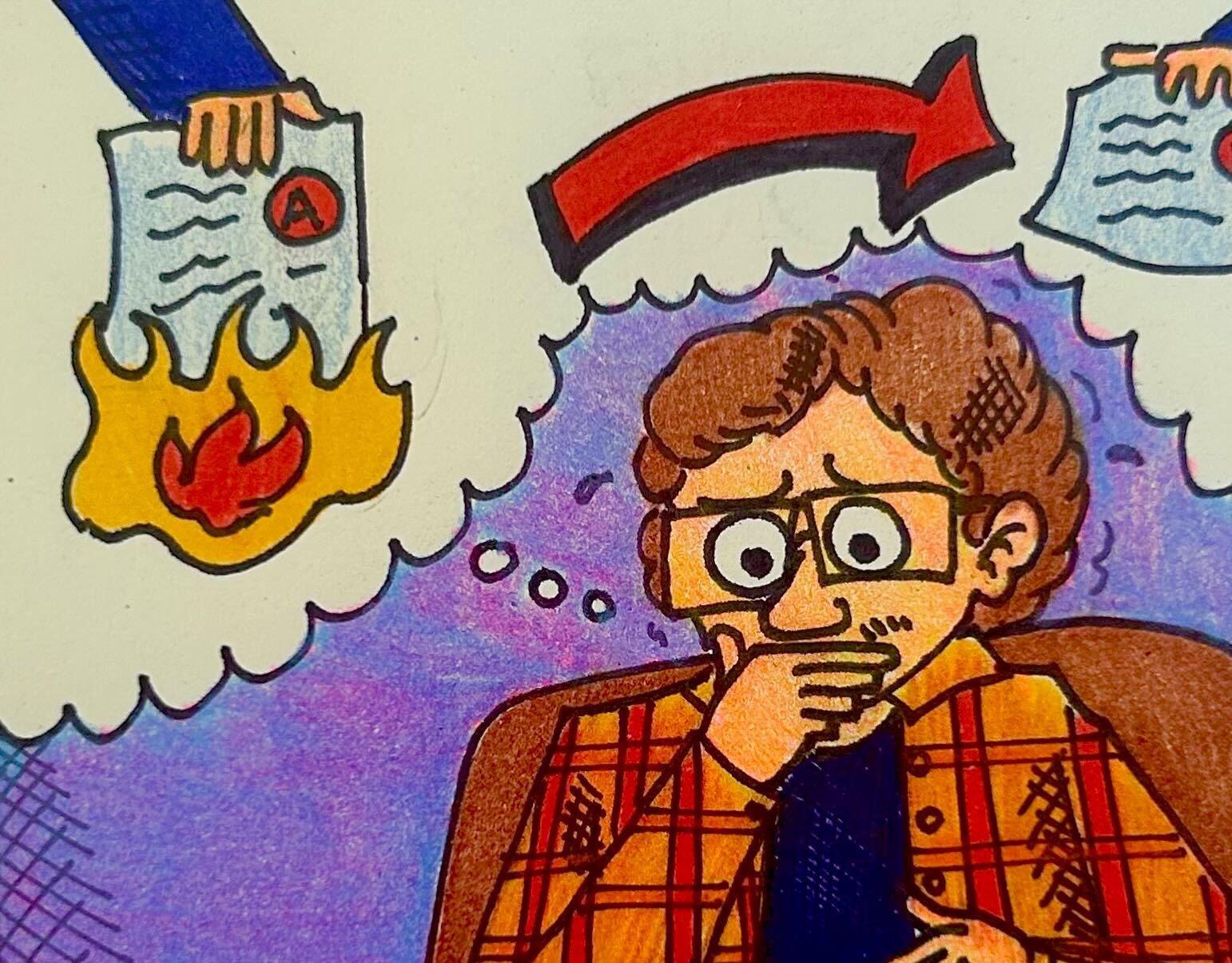
By Shreya Bhargava STAFF WRITER
I miss the feeling of learning something just because I wanted to know it — not because it was on a study guide or because I’d be tested on it — but just because it was interesting. It was the kind of curiosity that made me look up from a book and think: wait, the world is even bigger than I thought.
Somewhere along the way, that feeling got quieter. The shift was slow, like a battery losing charge. You don’t notice it until one day you realize the curiosity is gone. School didn’t kill it on purpose, but the constant stream of deadlines, rubrics and grade thresholds made learning feel less like discovery and more like duty.
I stopped following questions that didn’t lead to the right answer on a test. I stopped seeing knowledge as something alive and started treating it like something to collect, store and hand over for points. Research backs this up: overemphasizing grades can block genuine curiosity, shifting students’ focus from learning to performing, according to a Harvard Business School analysis. In other words, the education system’s rewards can slowly push out the very thing that makes learning meaningful.
Standardized tests take this problem even further. They claim to measure intelligence, but what they actually capture is access to resources, the ability to memorize patterns and how well someone performs under pressure — they only measure a small slice of human ability. Factors like test anxiety and socioeconomic privilege all play into scores, meaning a student’s test score often reflects their circumstances more than their actual capacity to learn.
I remember a conversa-
tion I had with someone who pointed out that if they had scored just one point higher on the ACT they would’ve been named salutatorian, a title that could have opened countless academic and career doors.
The thought stuck with me: how can a single test number carry that much weight, when it says so little about the actual depth of someone’s mind? The issue is that we start confusing those numbers with brilliance itself, when in reality, they miss the most human parts of how our minds work.
Studies in neuroscience argue students who struggle in traditional classrooms, often labeled as “C students,” may actually have brains wired for success in a different form. Research from the University of Pennsylvania shows variation in the prefrontal cortex and amygdala make certain students more comfortable with risk-taking and experimentation, skills that schools rarely reward but are crucial for real world problem-solving. Similarly, a study published on PubMed Central finds that individuals with ADHD or dyslexia often find conventional classrooms challenging. But, their unique qualities can foster creativity, resilience and unconventional thinking.
History is full of examples. Barbara Corcoran, who has dyslexia, struggled in school but built a real estate empire and became a star on the TV show Shark Tank. Steve Jobs, who faced challenges in traditional classrooms, became one of the most influential innovators in history. And Simon Biles, who has ADHD, turned what might’ve been considered a weakness into fuel for her athletic success.
The very traits our rigid grading systems often penalize may actually fuel curiosity, adaptability and lifelong learning, the characteristics
By Anika Flores STAFF EDITOR
The establishment clause within the First Amendment states “congress shall make no law respecting an establishment of religion.” This means schools, government and any federal entity cannot establish or promote an official religion.
Like many things within the constitution, this sentiment becomes entirely unimportant to President Donald Trump. Within his administration, the division of church and state on which the country has been built is merely a suggestion.
The president has vowed to protect public prayer in schools and encourages Americans to gather in groups of 10 to hold weekly prayers. He even went so far to say that “America has always believed in the power of prayer. And we will never apologize for our faith. Never ever,” according to the Washington Post. While there is nothing inherently wrong with the expression of religious beliefs, Trump, as president, is endowed with certain responsibilities concerning religious freedom.
schools struggle to measure but that keep learning alive outside the classroom.
The tragedy isn’t just that the system prioritizes efficiency over curiosity, it’s that we forget what it feels like to be genuinely excited to learn something. I think about the times I’ve felt it: staying up late watching a random documentary about history, falling down an internet rabbit hole about bodily functions, questioning my brother about random football facts knowing fully well I didn’t understand, asking my parents about their childhoods and realizing I haven’t heard half their stories. None of those moments will ever show up on a transcript, but they are the ones that make me feel most alive.
So the next time a question sparks even the slightest flicker of interest, chase it. Ask that stupid question, follow that weird tangent, dive into something you don’t have to know. Those little sparks are the parts of yourself the system can’t touch, and they’re worth protecting.
Tests aren’t going anywhere. They’ll always exist, and we’ll always have to play along. But maybe the answer isn’t to fight the system as much as it’s to protect the parts of ourselves it can’t reach — the secret, stubborn pockets of curiosity we keep for ourselves, and the things we learn without permission or purpose.
Here’s the truth: grades fade, GPAs flatten out, but the way you love learning stays with you forever. It shapes how you see the world, how you make sense of it and how you keep growing long after the tests stop.
Shreya Bhargava is a sophomore studying Legal Studies. Do you agree that the educational system is hurting students’ curiosity? Send all comments to opinion@dailycardinal.com
is incredibly doubtful he is including any other God than the one he ‘believes’ in because he pushed for eradicating anti-Christian bias, failing to mention the other religious American citizens follow. The vast majority of Trump voters are not members of religions other than christianity: only 21% of Jewish Americans, and 33% of Americans of other religions voted for Trump in the 2024 election, according to PRRI, and so he has no political gain in advocating for public prayer within groups outside of christians.
The president claims this initiative is to ‘unite’ Americans through prayer. But, it can only possibly do the opposite. The intense polarization of the current political state is not going to be magically solved by encouraging the prayer practices of a single religion. It creates even more division as it completely places those that subscribe to other religions as outsiders.
The encouragement of public prayer in federal places, like schools, is in violation of the establishment clause of the First Amendment as well as the idea of separation of church and state. This ideology derives from early American thought among figures including Roger Williams, who advocated for the “wall of separation” between government and religion in order to protect religious freedom for Catholics and Protestants alike.This idea has been carried into many other endeavors of the political system within the U.S. In contemporary society, this ideology protects people of all religions to feel respected and comfortable in federal spaces.
For Trump to push Christianity is, “an escalation of the White House’s increasing fervor for Christianity,” which is completely inappropriate and breaks down the very foundation this country is built upon. That very saying was curated with the christian God in mind, and Trump is very aware of that. There is not and has never been one religion that a president should be encouraging citizens to adhere to. Because although he does not technically mention Christianity, he goes on to say that “there has to be something after we go through all of this, and that something is God.” It
Again, even if Trump does not specifically mention Christianity in this, yet another, constitutiondestroying endeavor, it is undeniable that it is intrinsically implied. If he truly wanted to unite the American people, he would do it in a way that included everyone. Not everyone prays and not everyone should have to, especially in the “land of the free.”
Not only is this initiative entirely unconstitutional, but it is incredibly hypocritical coming from Trump. This man did not even swear on the bible when he was sworn in as president, he has 34 felony convictions, cheated on his pregnant wife and countless other insane acts that go against the religion he is preaching so heavily. He expects the American people to listen to his unethical, criminal and horrible self in preaching the Bible. Frankly, it’s truly ridiculous.
This is obviously just another desperate ploy to retain the support of the Christian Republican vote. He is playing to his audience, like he always does, and in doing so continues to break down constitutional foundations within the United States. It is not as jarring as it should be, which proves to be a lot scarier than the act itself.
Anika Flores is a Freshman majoring in English on a prelaw track. Do you agree that Trump’s actions are violating the separation of church and state? Send all comments to opinion@dailycardinal.com

By Avery Chheda, Amellia Fowler and Elizabeth Baumberger STAFF WRITERS
An estimated 300 community members rallied from Library Mall to the capitol for environmental protections Sunday.
The League of Women Voters of Wisconsin partnered with over 30 organizations, including 350 Wisconsin, Elevate and the Sierra Club to host Wisconsin’s first state-wide climate march since Trump’s reelection. The organizations called for environmental justice and the right to science and academic freedom.
“We cannot fight this global movement if we remain siloed in our work and struggles,” activist Marc Rosenthal, a member of the US El Salvador Sister City Network, said. “The struggles for indigenous sovereignty here in the United States, the fight for Palestinian Liberation, the struggle for climate justice, are [all] intricately linked at their very roots.”
Creative acts and speeches took place at Library Mall before climate activists, students and volunteers mobilized to demand action from the Trump administration, bringing Climate Week
NYC to an end.
Prior to the events of climate week, Trump continues to disregard climate change, most recently proposing to cancel the government’s 16-year-old finding that carbon dioxide emissions endanger public health, as well as cutting funding to the U.S Global Change Research Program.
Four of the 15 indigenous youth filing a lawsuit against the Wisconsin Public Service Commission (WPSC) kicked off the event with an Anishinaabe Water Ceremony.
The lawsuit, backed by environmental law nonprofit Midwest Environmental Advocates, alleges WPSC, who controls the approval and construction of power plants throughout the entire state of Wisconsin, have knowingly perpetuated the harmful construction of fossil fuel powered generators.
During the ceremony, one of the children walked around sageing people while softly praying, ending by inviting protesters to partake in the ceremony by drinking the water, as water is a symbol of life and healing source in the Ojibwe creation story.
The 350 Art Collective followed the plaintiffs with a per-
formance in which 10ft. papermache statues of Mother Earth and Lady Liberty debated democracy’s role in “healing this wounded world.”
The performance was based on the idea that “democracy is essential to the web of life,” collective member Dianne Brakarsh said.
“If people give up on democracy, only the powerful can speak,” Brakarsh said. “When greed shouts, the quiet wisdom of nature goes silenced.”
350 Art Collective’s name references the maximum amount of CO2 allowed in the atmosphere for it to be liveable, 350 parts per million (ppm). According to the National Oceanic and Atmospheric Administration, the concentration was 420 ppm as of May 2023.
Over the 40 minute walk from Library Mall to the capitol led by the Forward! Marching Band, “Madison’s community activist street band,” plaintiffs and protesters led the crowd through several chants, calling for “environmental justice now!”
Sen. Chris Larson, D-Milwaukee, began the rally at the capitol discussing how the U.S. government enables the

climate crisis by environmental protection rollbacks.
“Let’s be absolutely clear about how we got into this mess,” Larson said. “We got here after decades of fossil fuel emissions changing the composition of our atmosphere and [raising] the global temperature.”
Hannah Stahmann, a member of 350 Art Collective and University of Wisconsin-Madison alum, told The Daily Cardinal collaboration like the climate march builds a united front.
“It gives you hope [when you] remember that there are people who feel the same way as you about what’s going on in the world right now,” Stahmann told the Cardinal.
Attorney General Josh
Kaul said a stable democracy is essential to combatting climate change.
“Our democracy and the fight against climate change [are] linked issues,” Kaul said. “When we lose our democracy, [that’s] when the interests of polluters and the fossil fuel industry get served and the interest of the people get left behind.”
Rep. Francesca Hong, D-Madison and governor candidate, encouraged Wisconsinites to remain hopeful and unified in an era of growing political anxiety.
“Our solidarity is stronger than their division,” Hong said. “Our resistance, stronger than their repression. Our movement [is] one of care, compassion [and] moral courage.”
By Sonia Bendre SCIENCE EDITOR
Sam Frank, the head of the University of Wisconsin-Madison startup Realta Fusion’s theoretical physics team, Kai Shih, a Realta scientist, and Aaron Tran, a UW-Madison postdoctoral researcher, have spent years designing a model that shook up the order of the fusion world.
The team of researchers collaborated to build a computer model for their magnetic mirror fusion device prototype Wisconsin Hightemperature-superconducing Axisymmetric Mirror (WHAM), demonstrating control of plasma instabilities and catching their simulations up with 40 years’ worth of research into other fusion designs. Overall, Realta’s scientists said the project has pushed them forward in the fusion race.
The magnetic mirror’s golden age
Nuclear fusion, which works by smashing two hydrogen-based atoms together in hot plasma to create a highenergy output, is a promising option for an increasingly energy-hungry world: the technology is clean and can theoretically produce a massive amount of energy from low levels of starting material.
The magnetic mirror is one of a subset of fusion designs that use magnetic fields to create the hot conditions necessary for fusion, consisting of two mirrors on the ends of a cylindrical metal tube. Energy injected into plasma within the tube bounces back and forth between the mirrors.
WHAM is a tandem mirror, containing a third mirror in a “central cell.” The two end mirrors are kept at a high energy density, preventing the lower-pressure central cell from “leaking” plasma.
Though the two mirrors on the ends of the cylindrical design act as plugs for plasma confinement, they also perturb the design’s magnetic field, creating drift-cyclotron losscone instability. To explain this, Frank compared plasma to a body of water that can “ripple” when perturbed, creating waves that knock particles out of the device.
“What these waves will do in the drift-
cyclotron loss-cone mode is take energy out of the particles that are in your plasma, and knock them out of your mirror, and grow,” Frank said. “They will continue to grow and get bigger and knock stuff out, and eventually you’ll have no plasma left.”
In its first plasma confinement experiment with WHAM, Realta demonstrated the highest magnetic field in the history of fusion research, 17 Tesla, showing the device’s potential for higher-temperature experiments.
But where there existed 40 years of instability simulations for tokamaks, Realta’s magnetic mirror configuration essentially started from a computational blank page, according to Frank. Drift-cyclotron loss-cone instability only occurs when plasma is hot enough to support fusion — hotter than in current experiments with WHAM.
Researchers have known drift-cyclotron loss-cone instability could occur since the 1960s, but Realta was able to model this instability in a 3-dimensional computer simulation for the first time.
The simulation showed that by introducing tactics to control the instability, WHAM could confine plasma for around 100 microseconds. Though this number is still lower than the “ideal” 0.1 to 0.2 seconds of confinement time, the researchers remain hopeful that simulating more control methods will allow them to close the gap.
The team behind Realta’s innovation
Shih, Frank and Tran all worked together to build the computational model. Frank is an author of both papers published in August, Shih is an author of the August paper on plasma confinement and Tran is an author of the August paper on drift-cyclotron loss-cone instability.
Shih is originally from Hong Kong and traveled to the United States for a PhD in fusion at Stony Brook University. After 10 years in New York, he moved to Madison to work at Realta.
“I’ve always been interested in fusion,” Shih told The Daily Cardinal. “From a young age, I already felt like fusion is an unsolved
problem that our generation of scientists has the responsibility to tackle.”
Shih’s work bridges Realta’s theoretical and experimental groups: his job consists of “translating the physics into computer code,” he said. One of his responsibilities is running an internal plasma diagnostic. Optical sensors record pictures of plasma during experiments, and Shih wrote code that performs an image “reconstruction,” allowing Realta’s scientists to examine the plasma’s properties.
Frank, whose impetus for going into fusion was childhood TV shows and books, studied physics at the University of Michigan and completed a PhD at MIT before he joined Realta. He enjoyed the challenge of developing the magnetic mirror simulation “from scratch” using results from the tokamak and stellarator, more highly researched nuclear fusion topologies.
“We can build on a lot of the things that were learned from the tokamak and the stellarator to do it better and faster than they did it originally,” Frank said. “That has been a really fun problem. Here’s a clean slate: how do you go and build a simulation program for this device that nobody’s ever really tried to build a simulation program for before?”
Tran, on the other hand, described his journey into the field of fusion as “more meandering than average.” He studied geophysics at the University of CaliforniaBerkeley, then completed a PhD in astronomy at Columbia University in a group that incidentally conducted research in plasma physics. Two years ago, he started a postdoctoral position at UW-Madison, not originally knowing what project he would work on.
“It worked out that my skill set in computer simulations, that led to this paper, slotted in with the WHAM group,” Tran told the Cardinal. “I was able to get started more quickly and contribute something a little different than what was already being done, and what was already possible.”
Tran worked on the 3-dimensional physics-based simulation of a magnetic mirror for around a year, saying he received the “seed” of the idea from a group of researchers at Los Alamos National Laboratory.
“Because I was able to focus on [the simulation] almost full-time for about a year, we were able to work together to incorporate more realistic physics [and] couple multiple codes together,’’ Tran said.
The team’s process involved identifying the “real-world physics” problem to model and selecting variables and equations necessary to fully “describe [the problem] using computer language,” according to Shih. Compared to the tokamak and stellarator, Tran said the magnetic mirror had “a clean, simple geometry” that made it easier to model.
Once the team created a draft of the code, they “iterated” it by comparing it to a synthetic scenario with a known expected result — a process called benchmarking.
In the future, the team plans to “validate” their model, comparing it to more extensive, current experimental data from WHAM.
Tran said each member of the group relied on others’ expertise to create the magnetic mirror model.
“I came from a different field, but I brought some expertise in kinetic physics to understand this instability,” Tran said. “Sam worked on tokamaks, rather than mirrors, before, but then he had that broader context of what is going on in the fusion land and how to draw analogies [between] what was learned there and what we had to learn from the mirror.”
Together, Realta’s team of researchers brought what Tran called the “longburning societal moonshot” of fusion a bit closer to reality.
“I think it’s an exciting time to be in this field,” Tran said. “There’s interest from graduate students, undergraduates, young people. The Department of Energy and investors are willing to fund [fusion].”
Frank and Tran both credited UW-Madison’s fusion environment for making their research possible.
“If I were an independent person, I wasn’t a postdoc, I was just someone sitting in their house and sending off random emails to scientific publishers, I could have never done this myself,” Tran said. “It was only possible because I was here in this ecosystem.”
